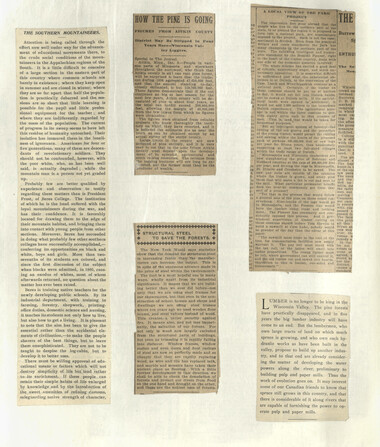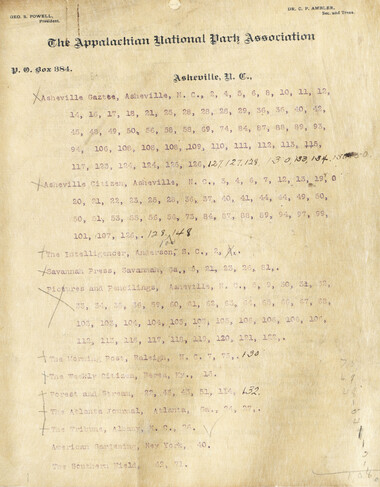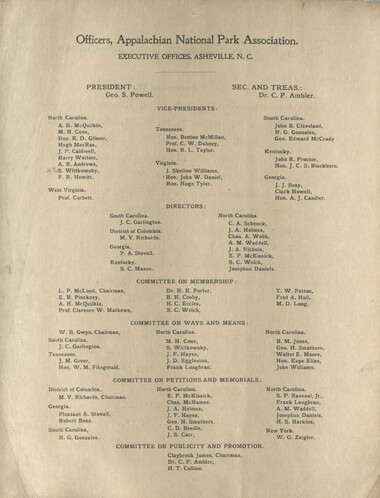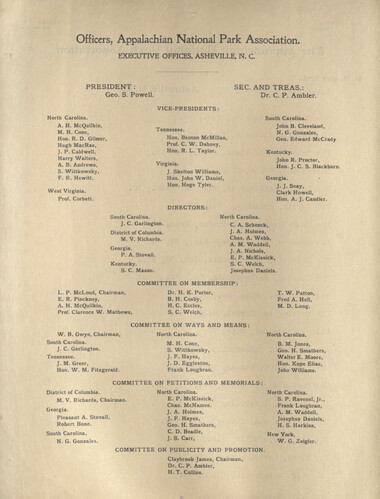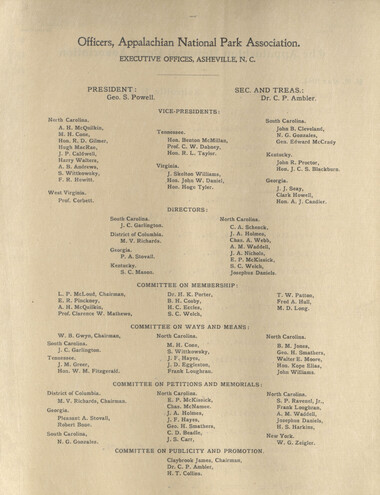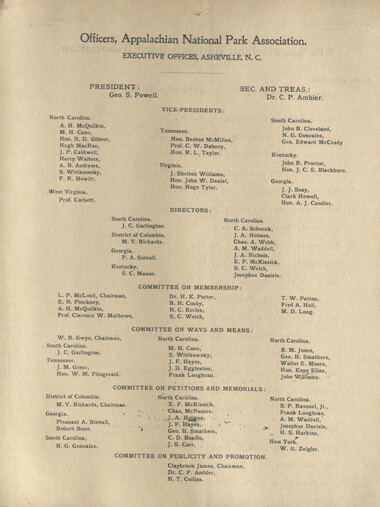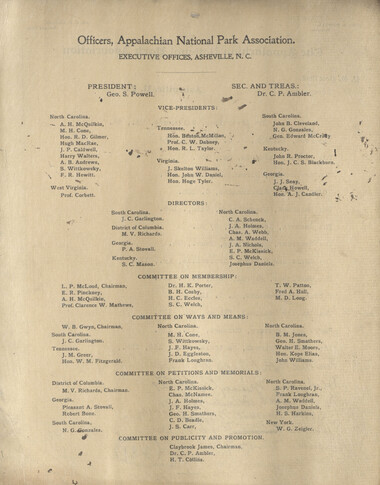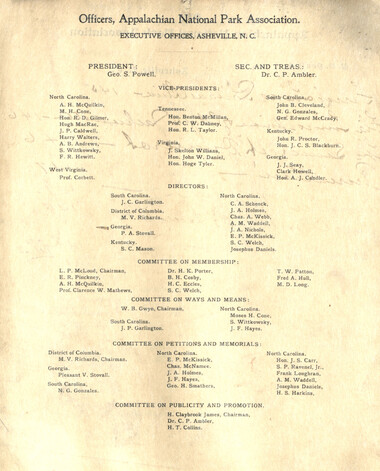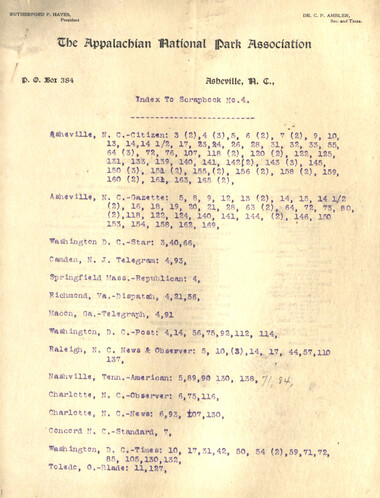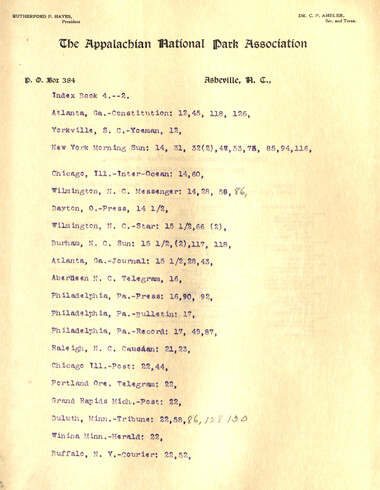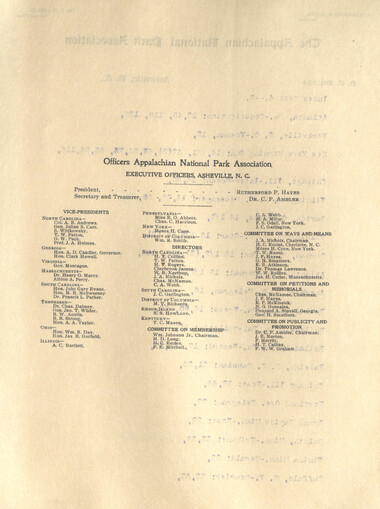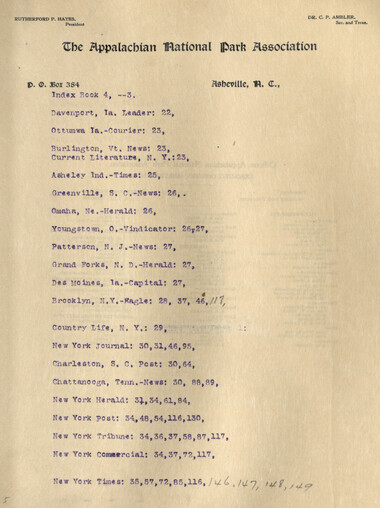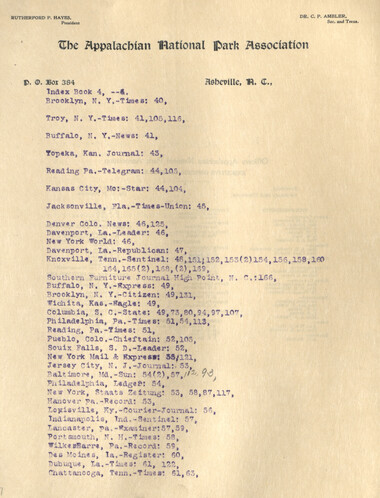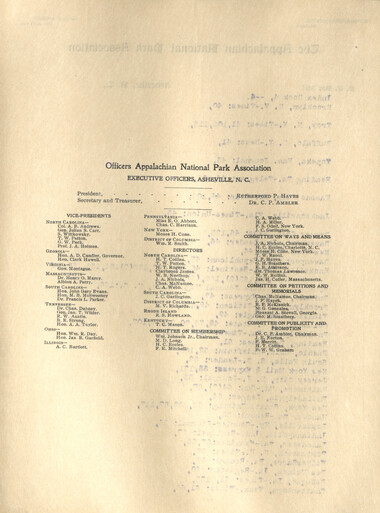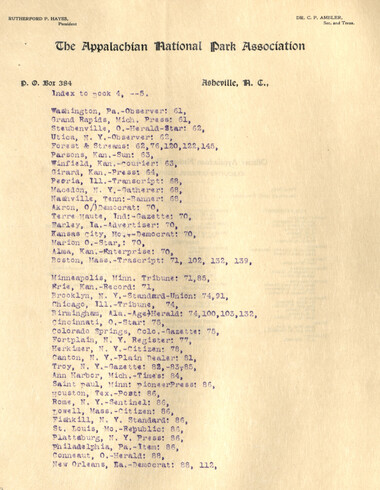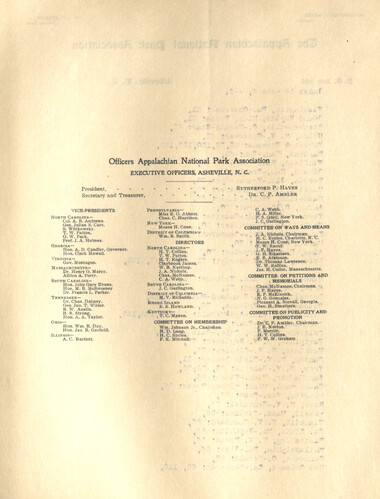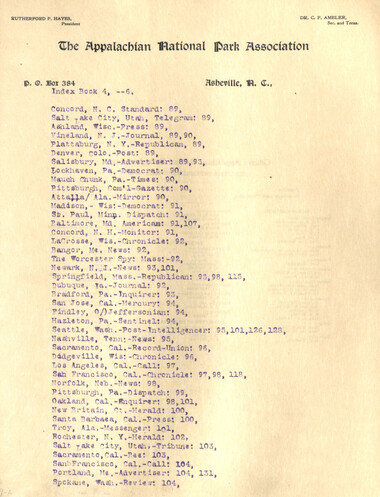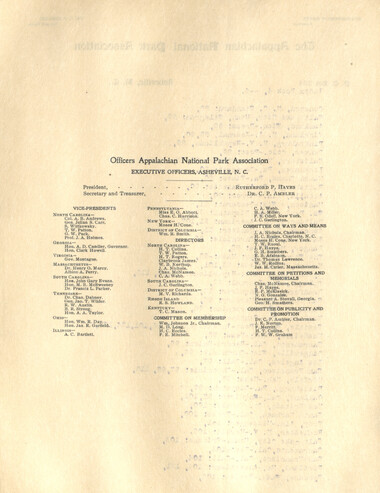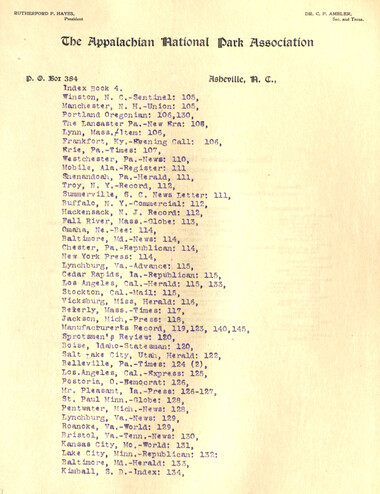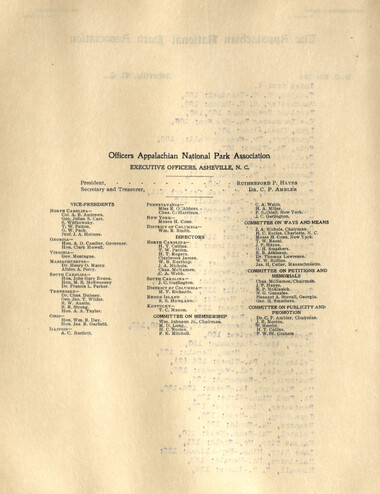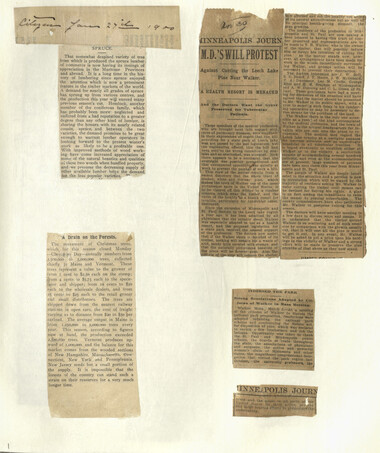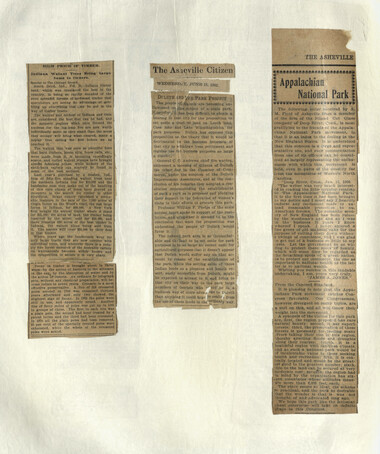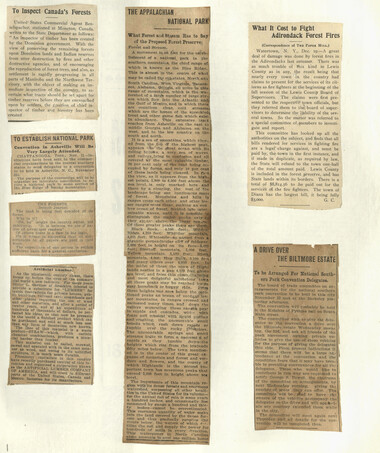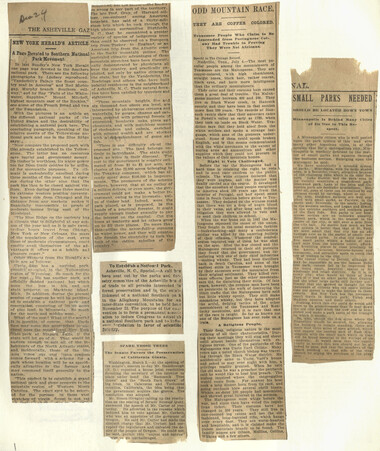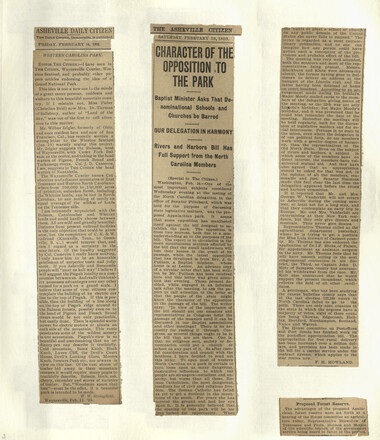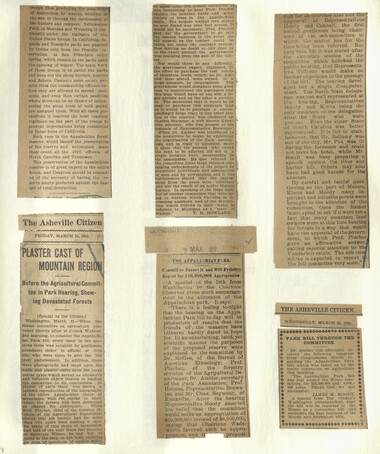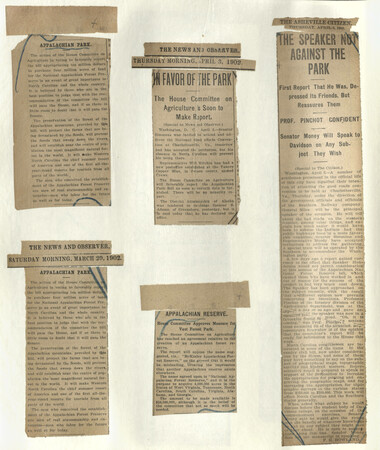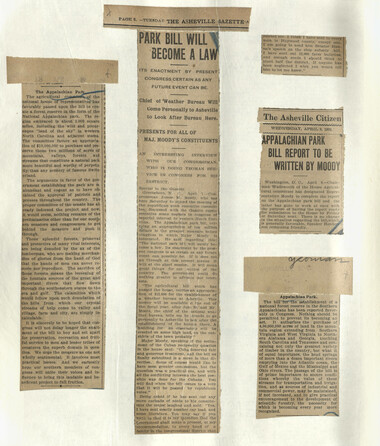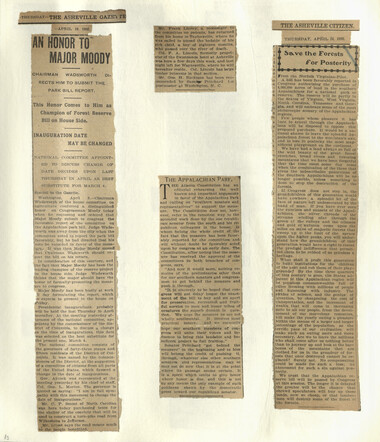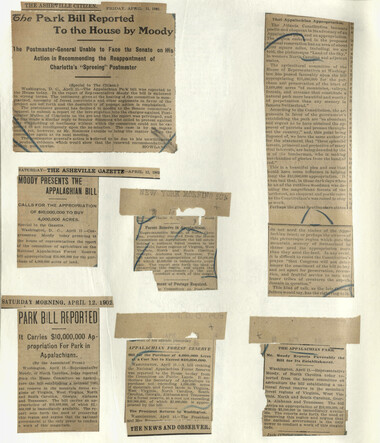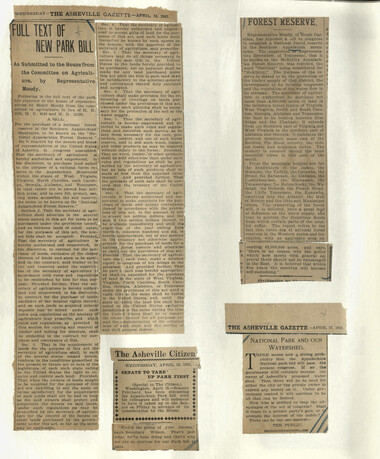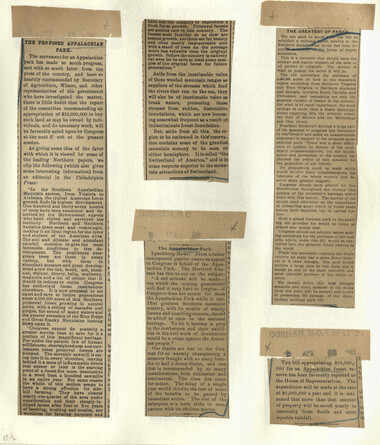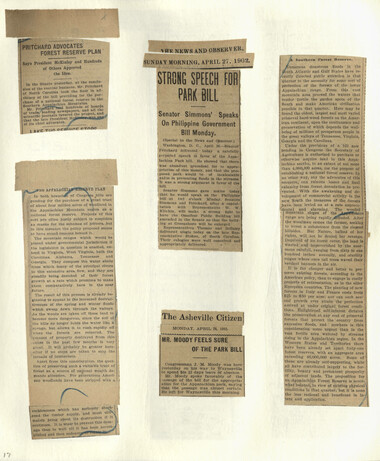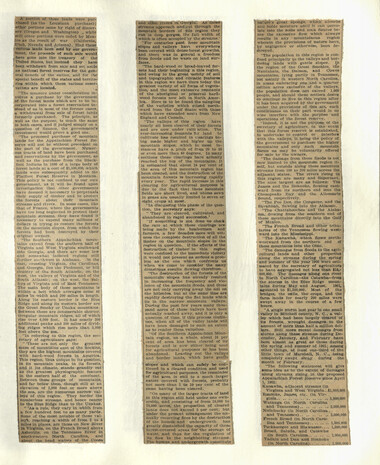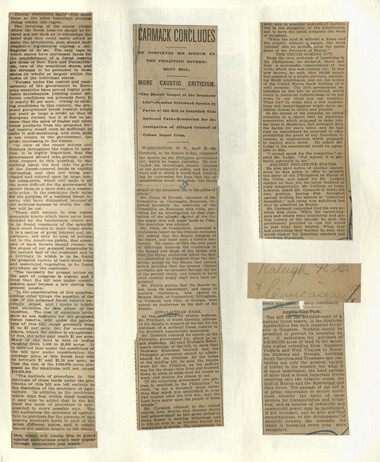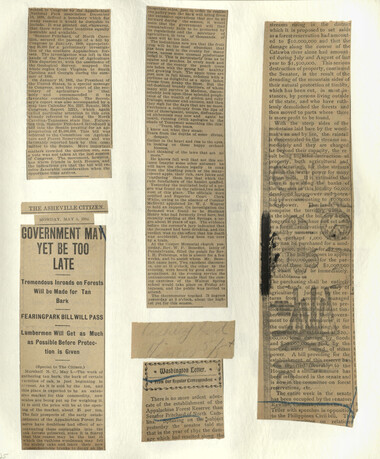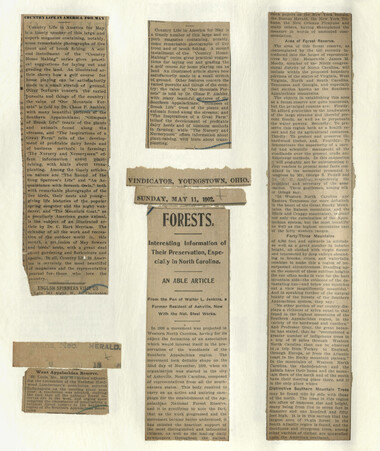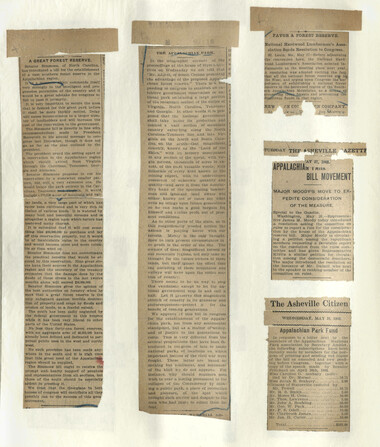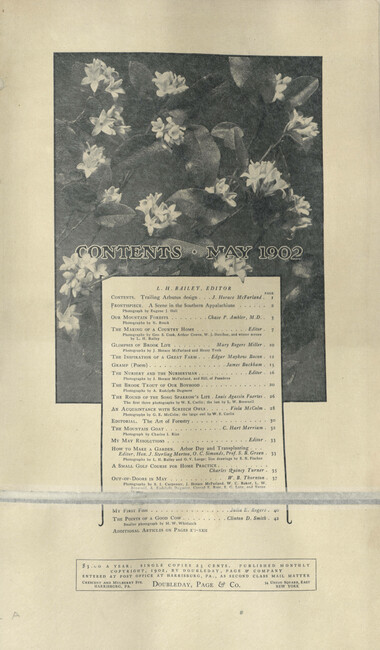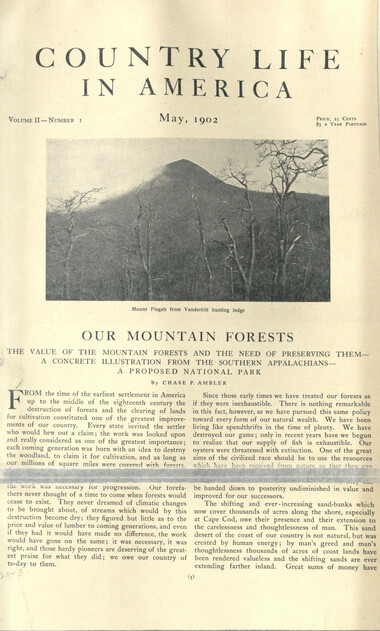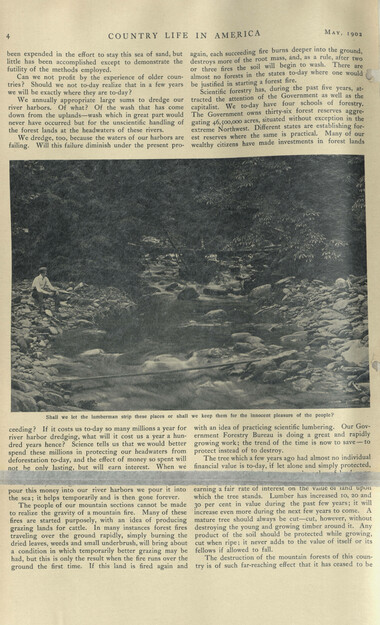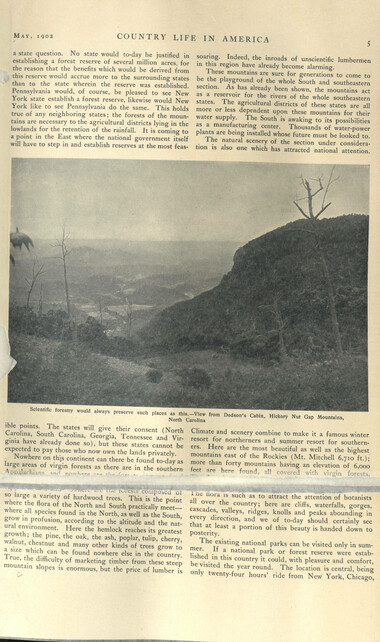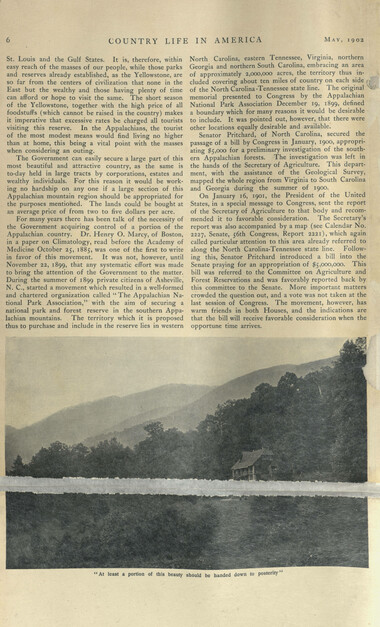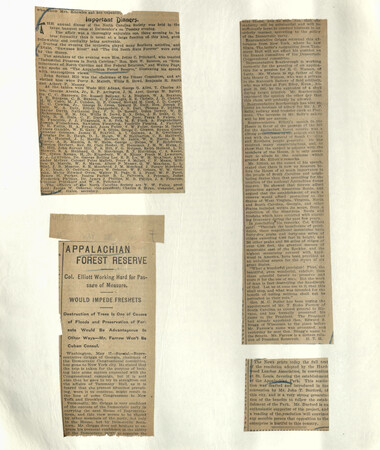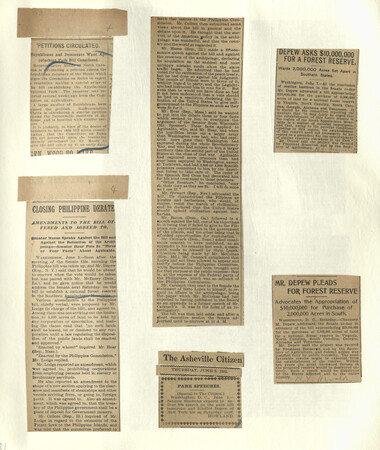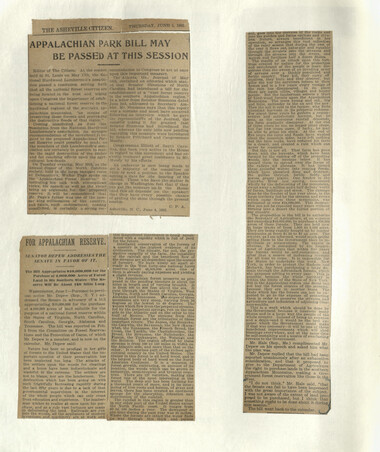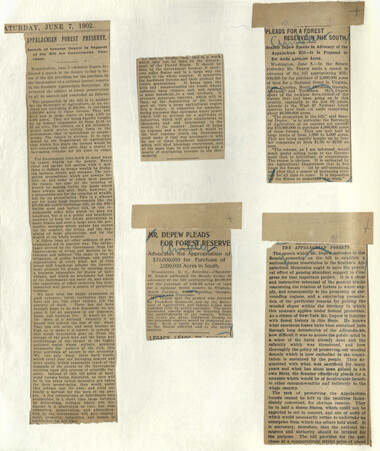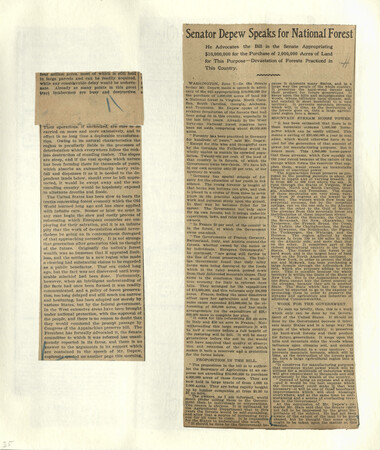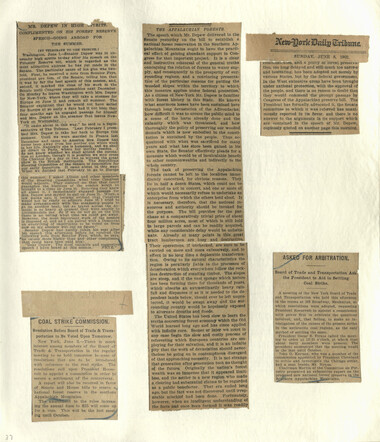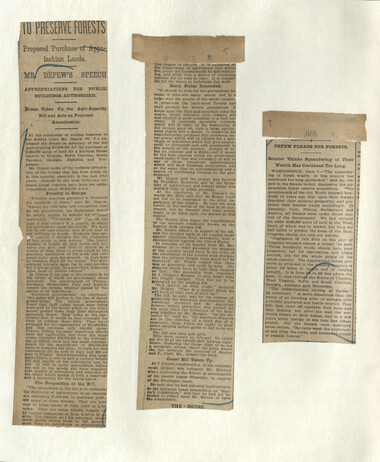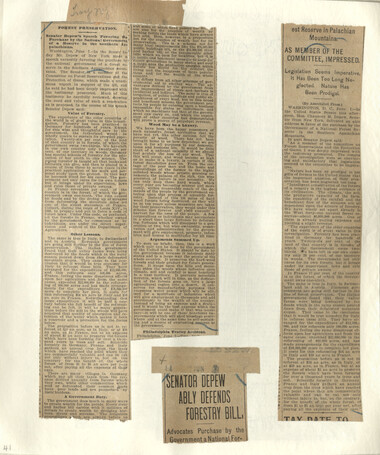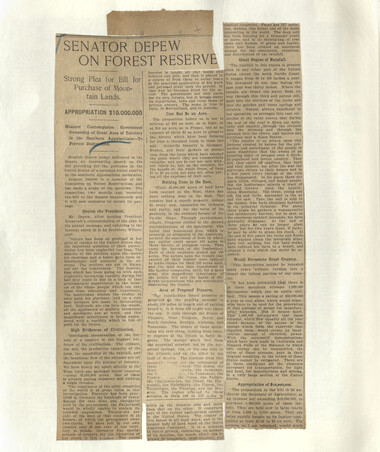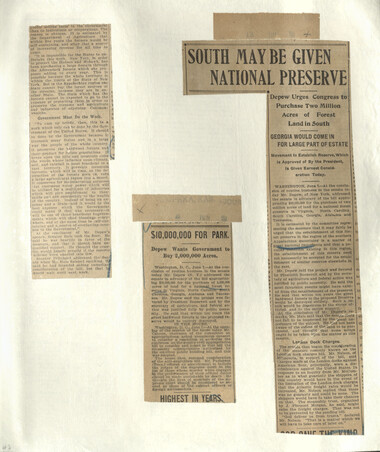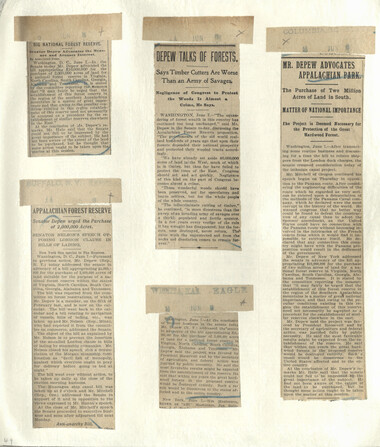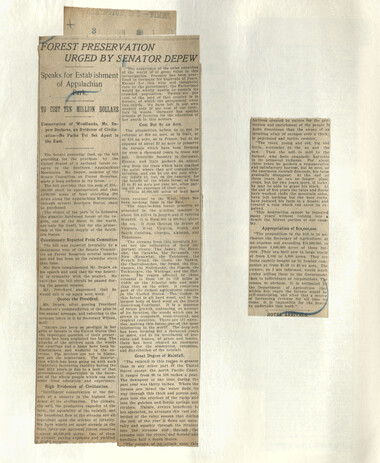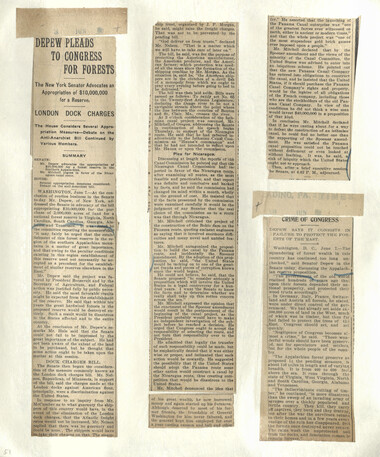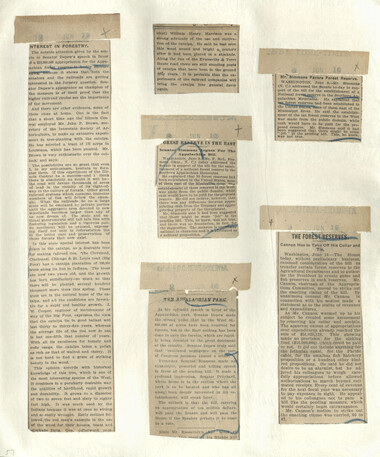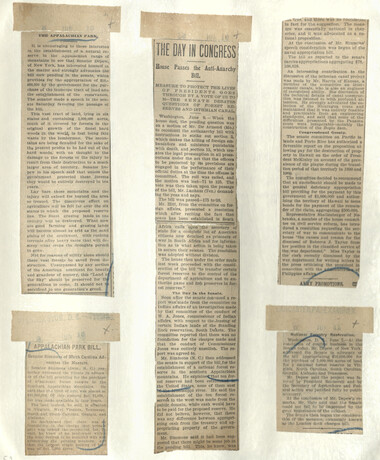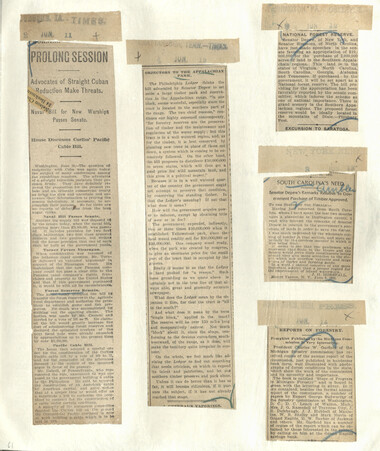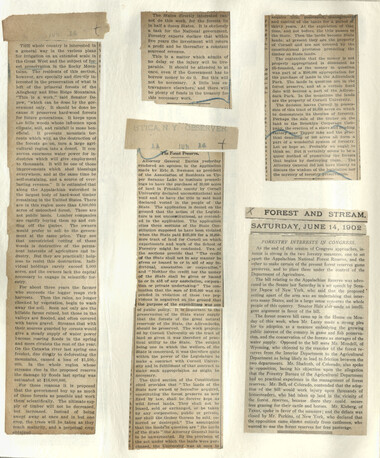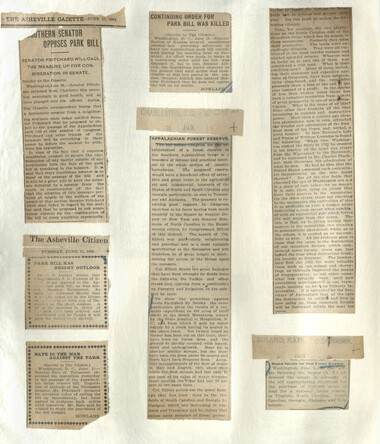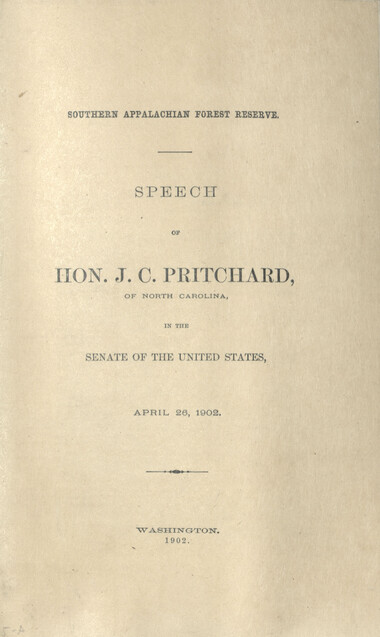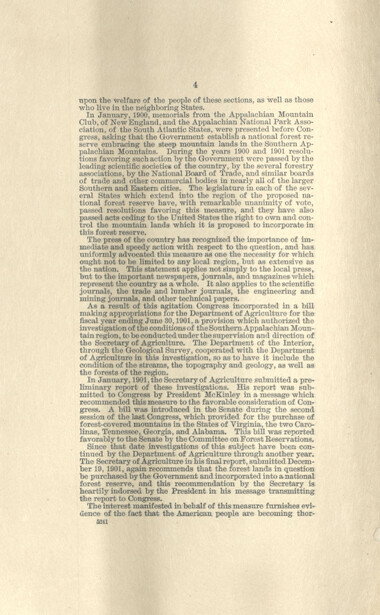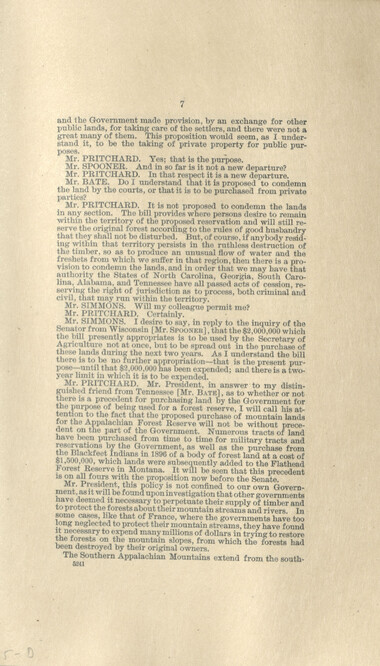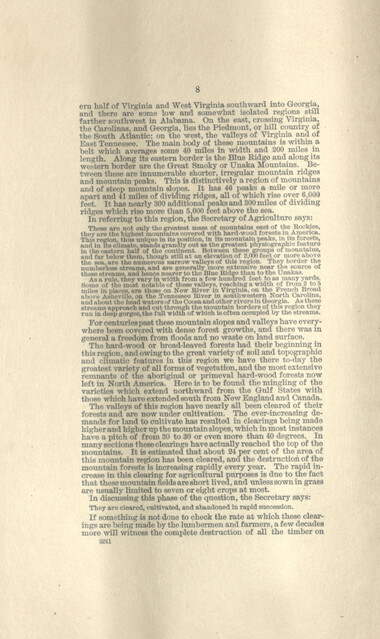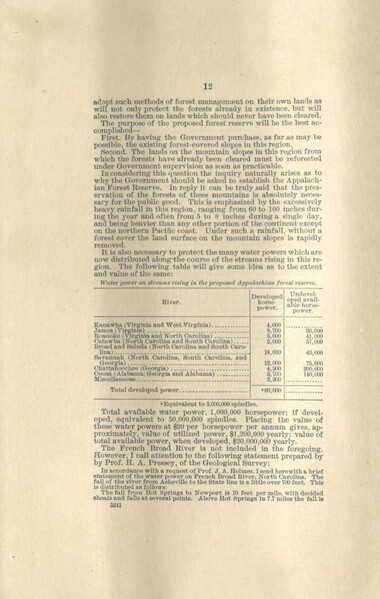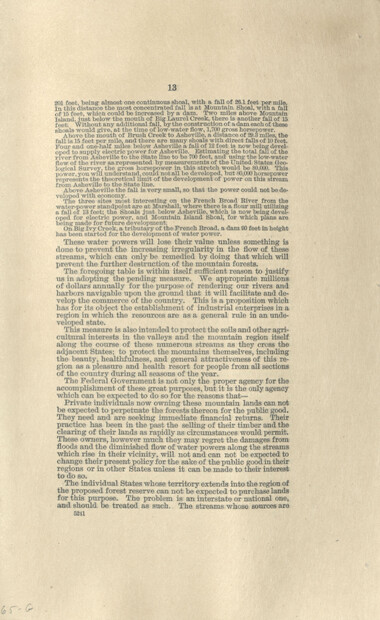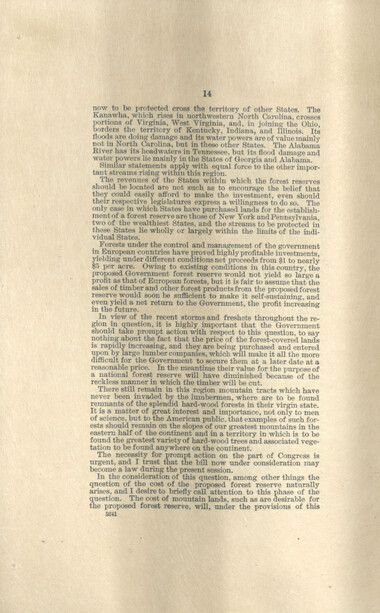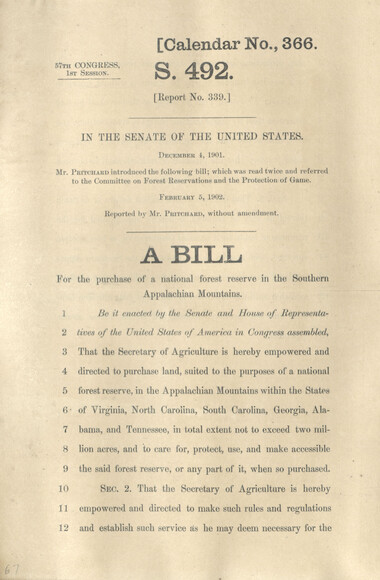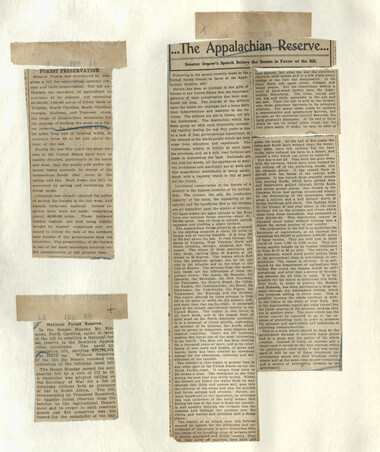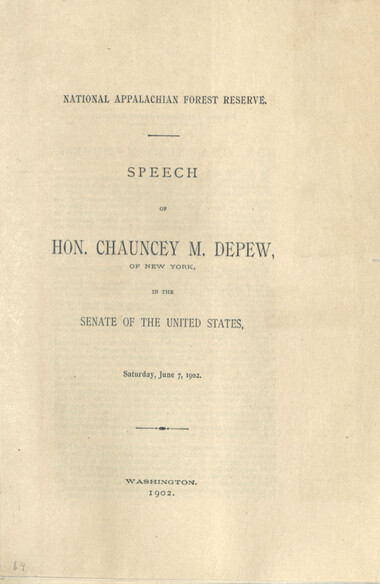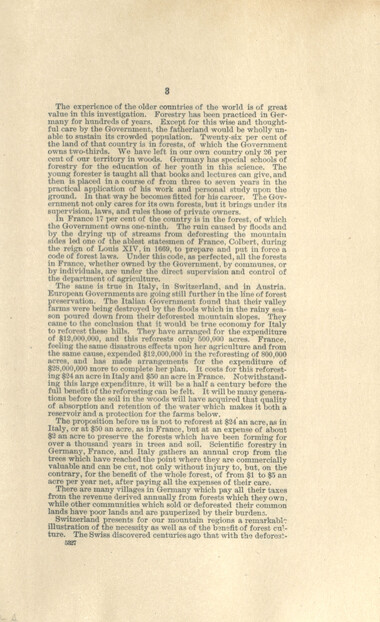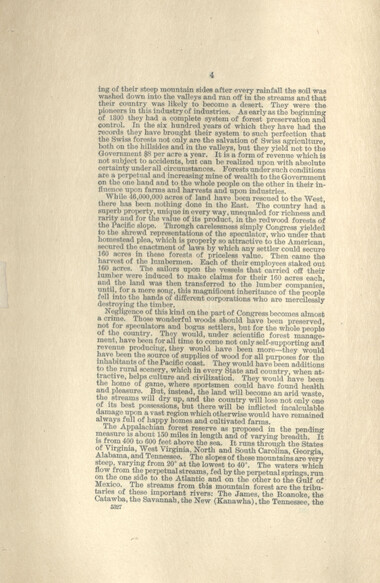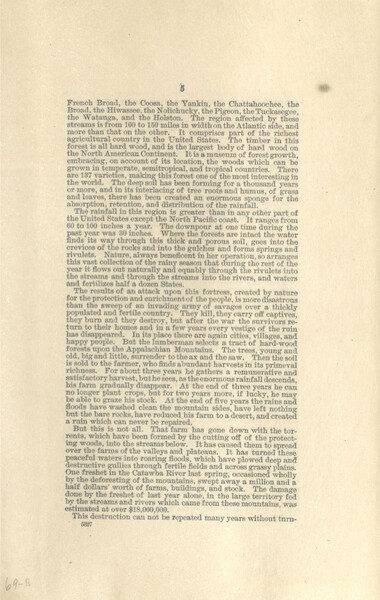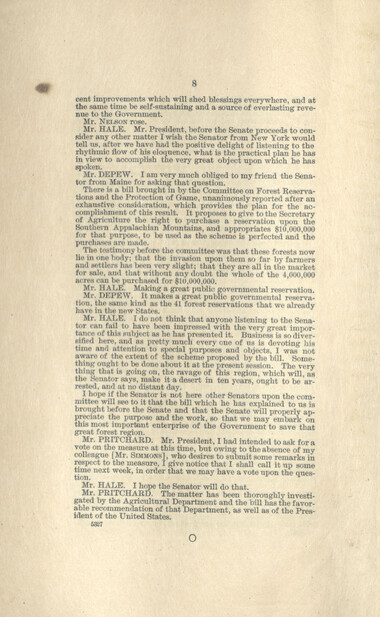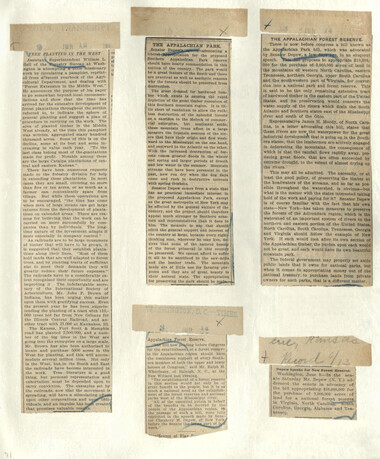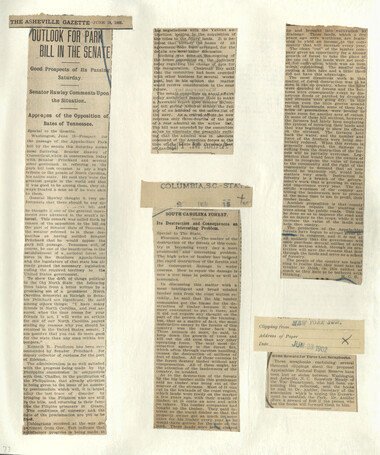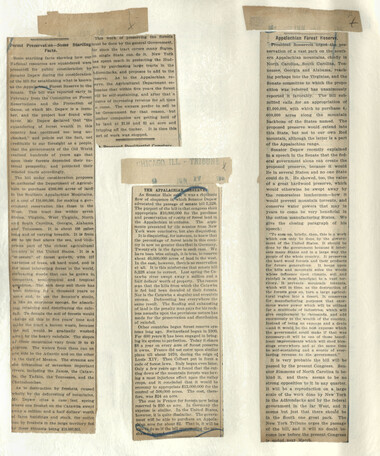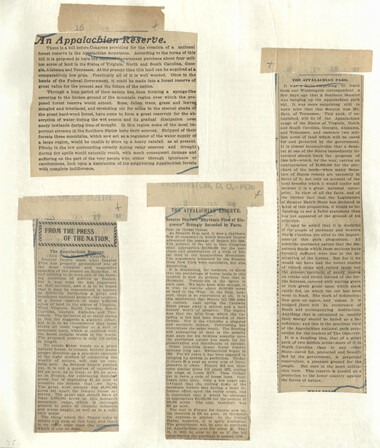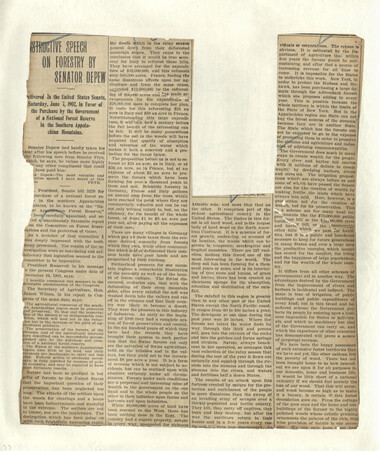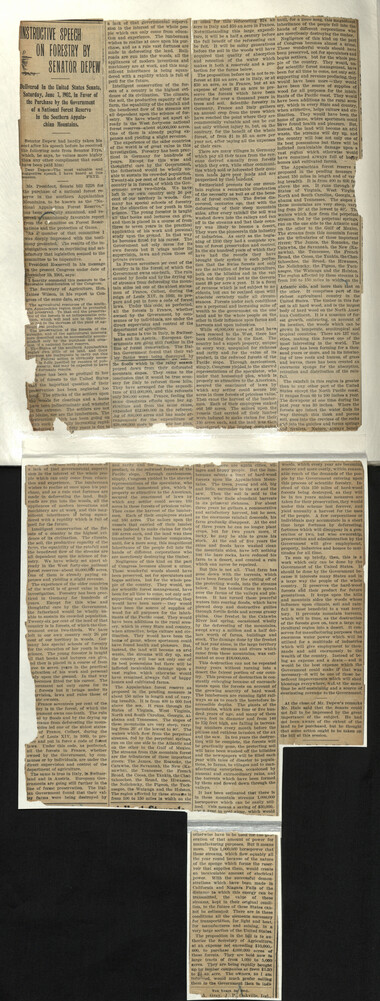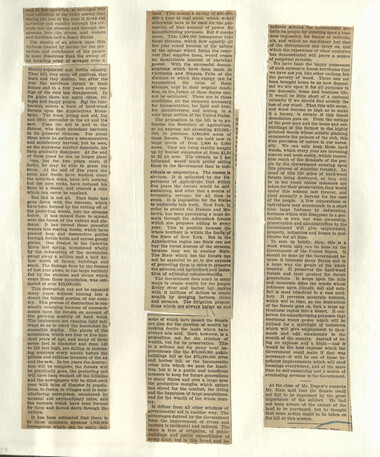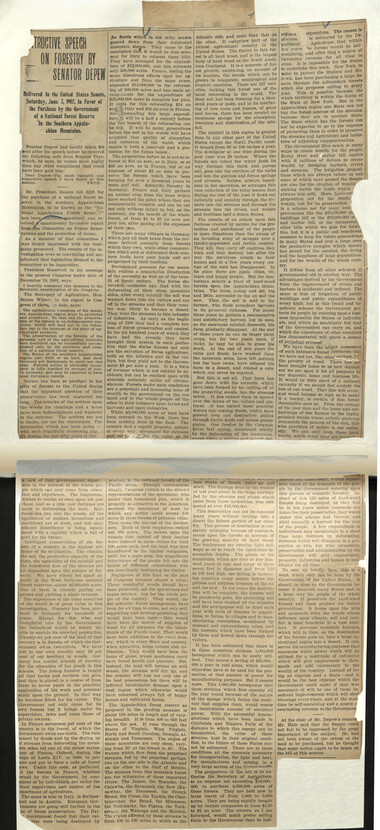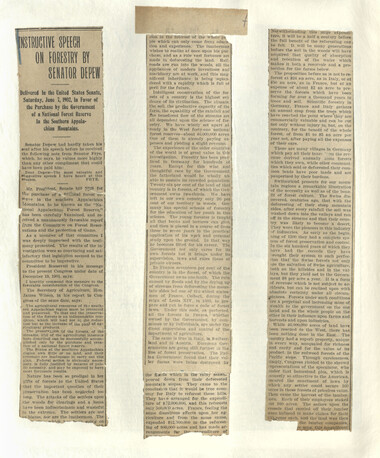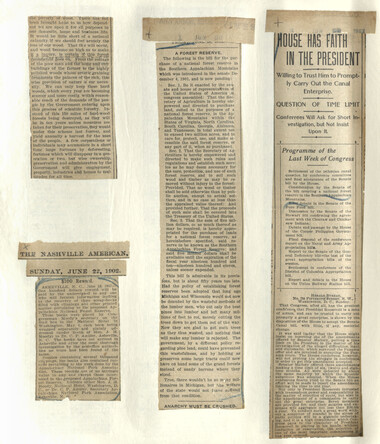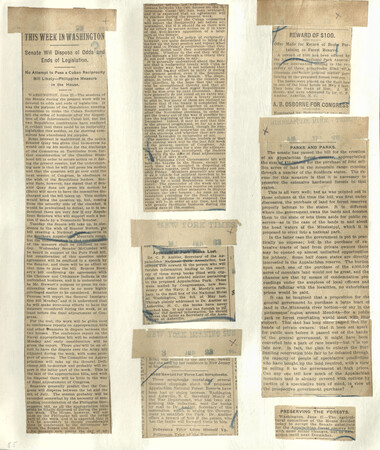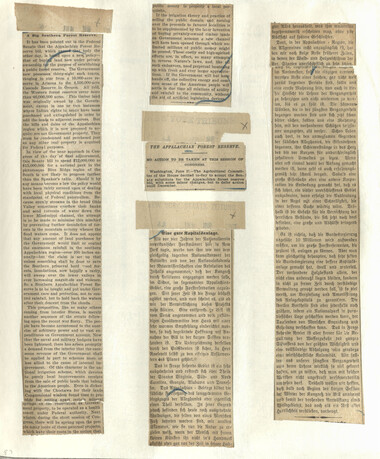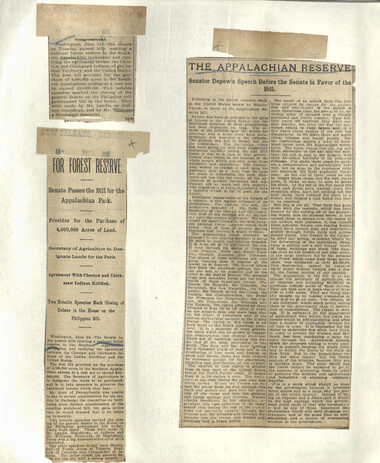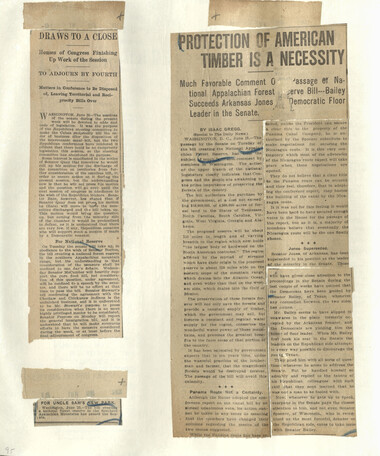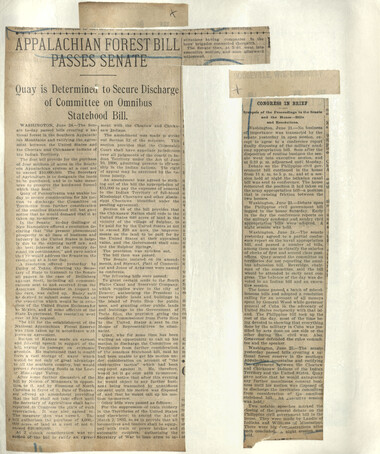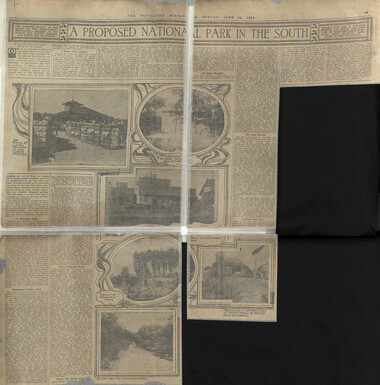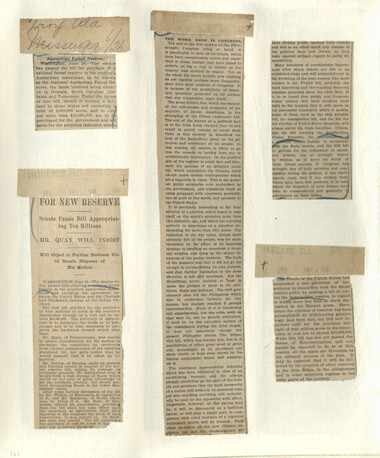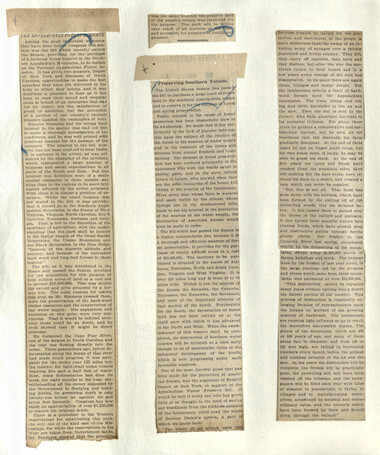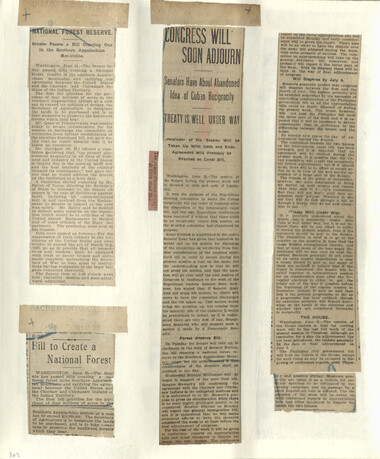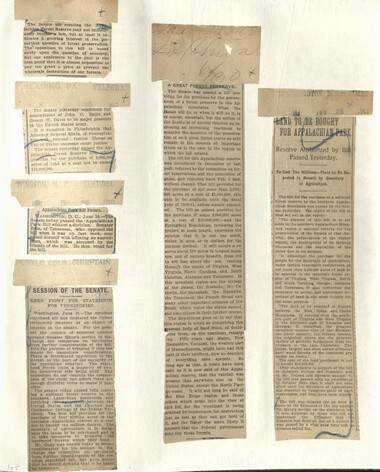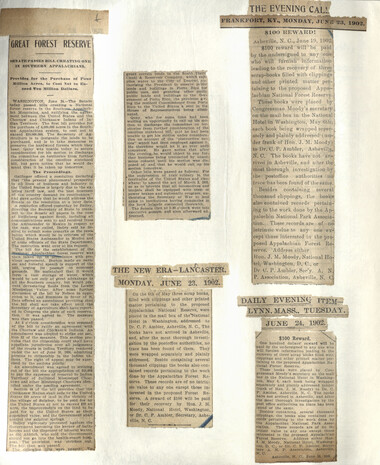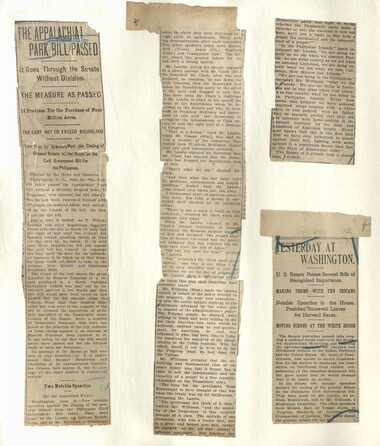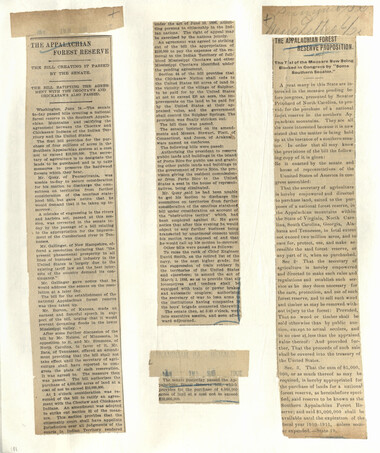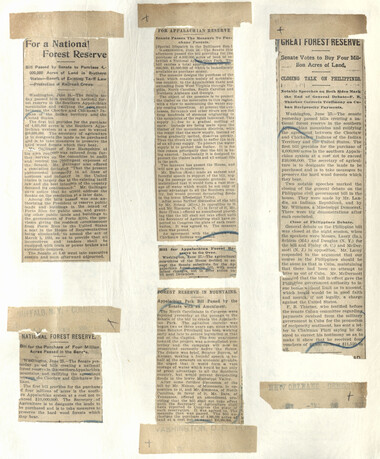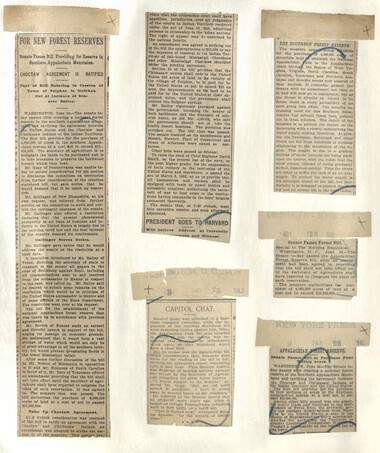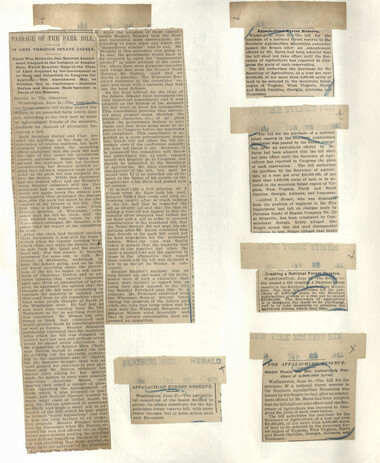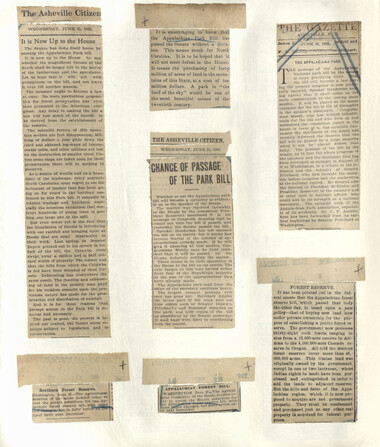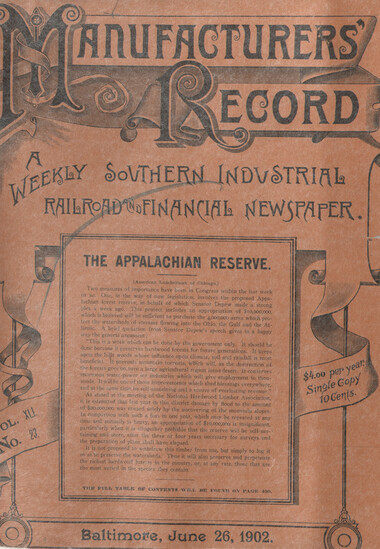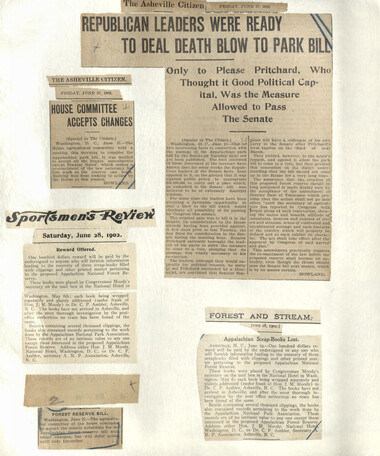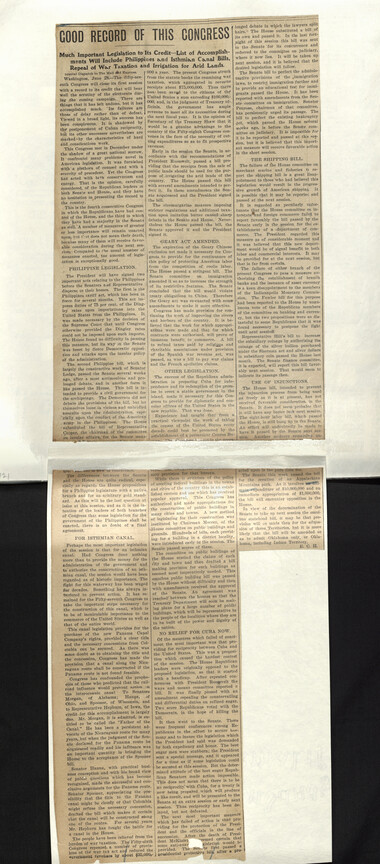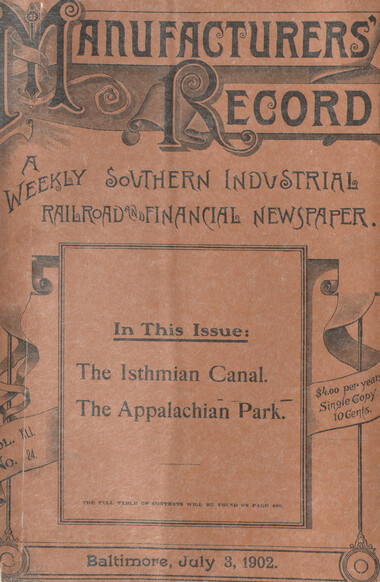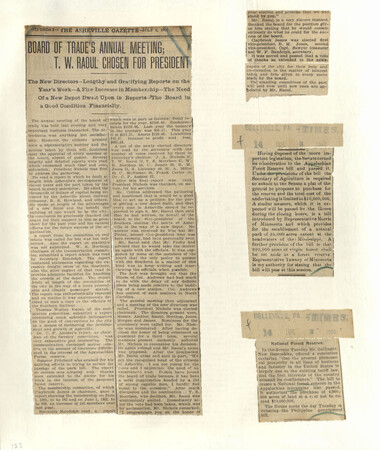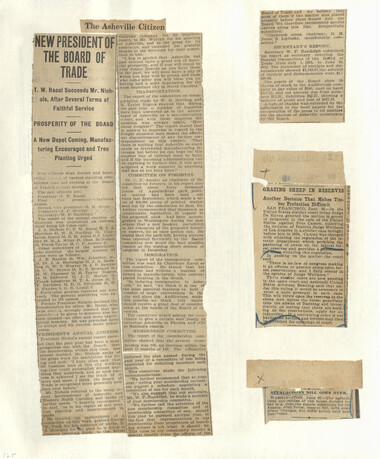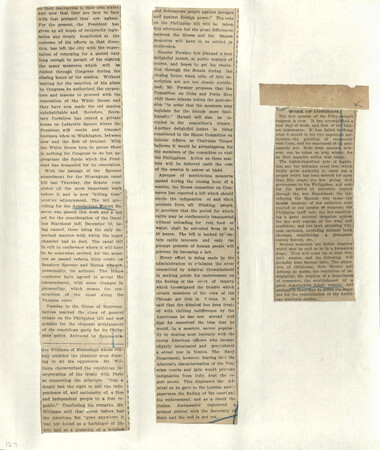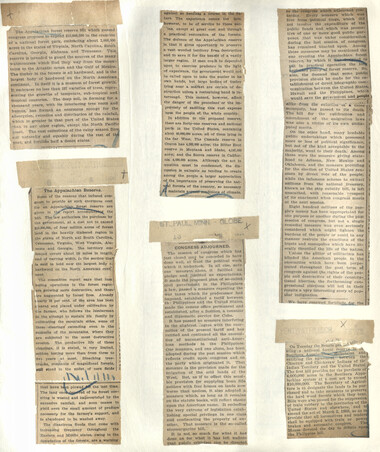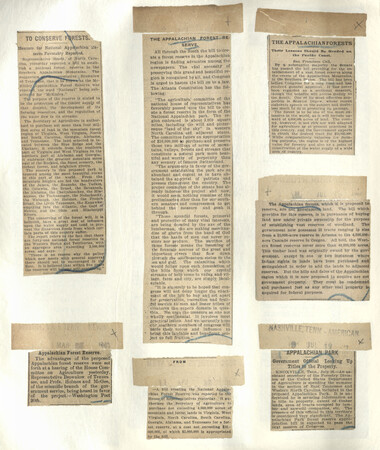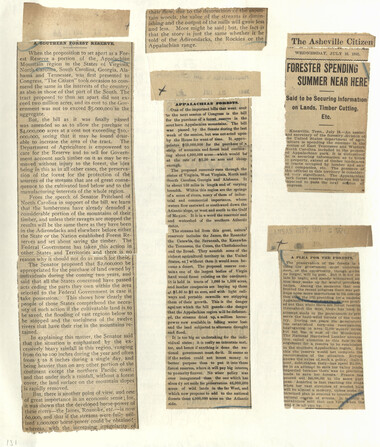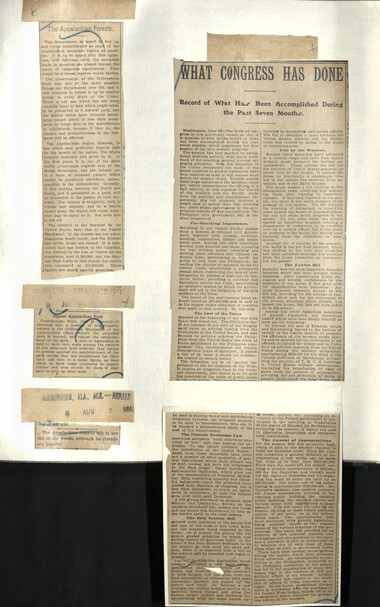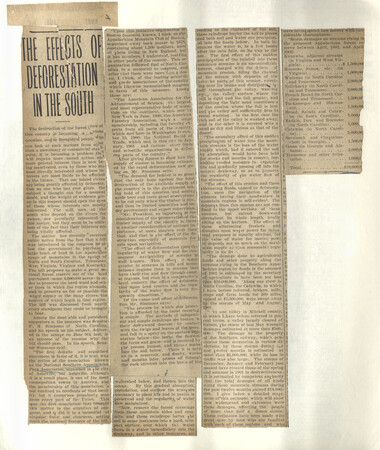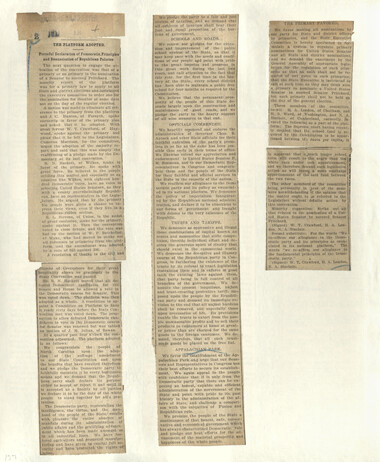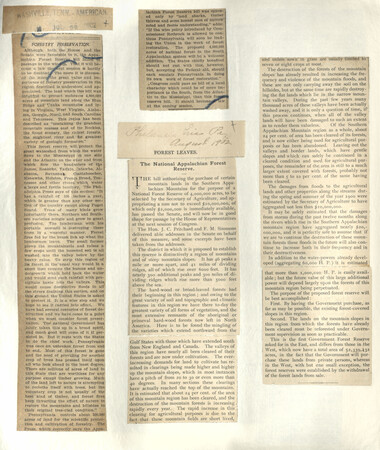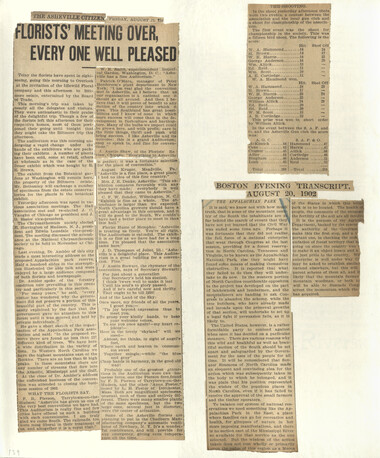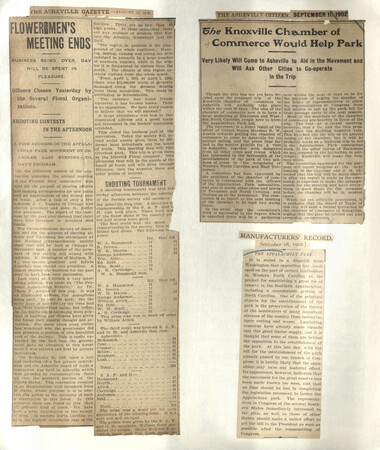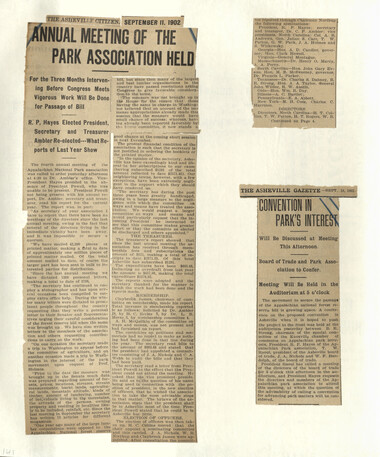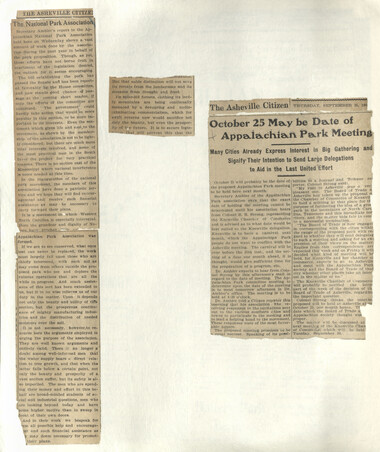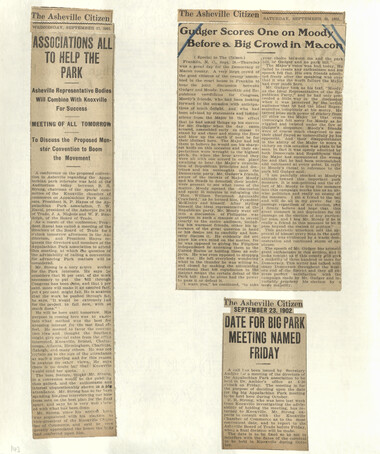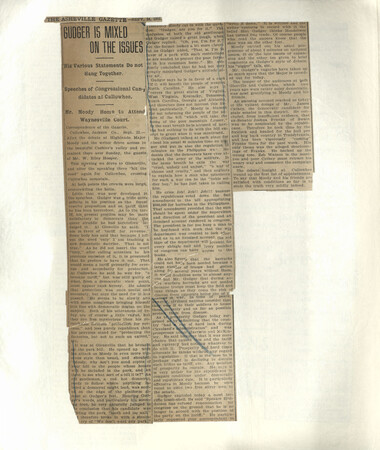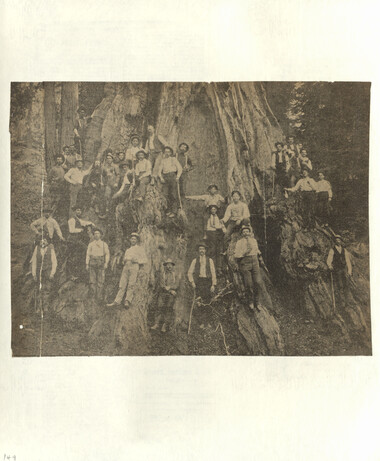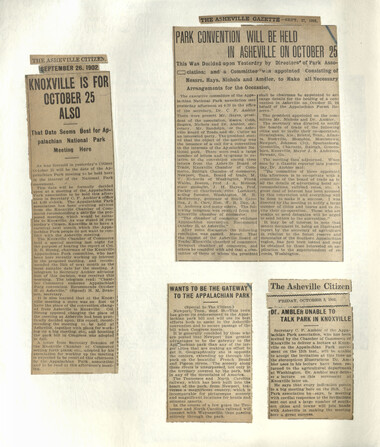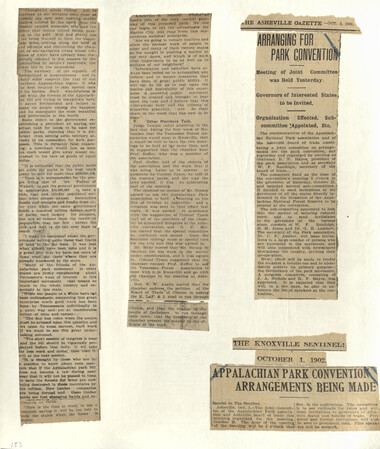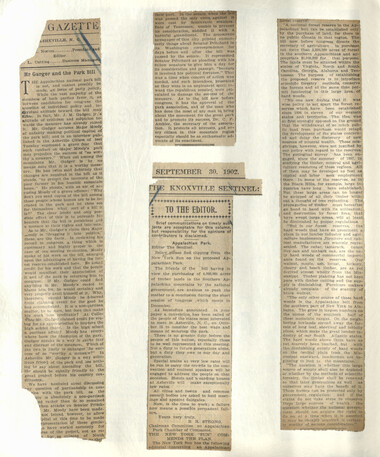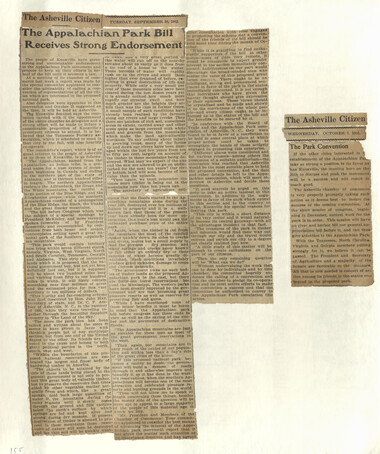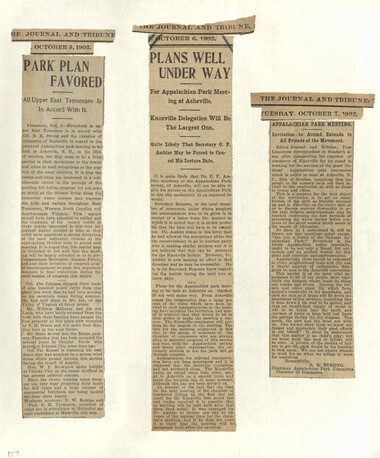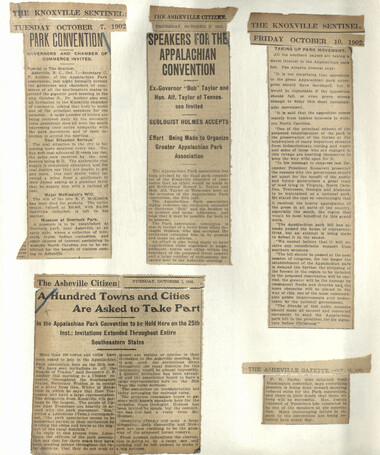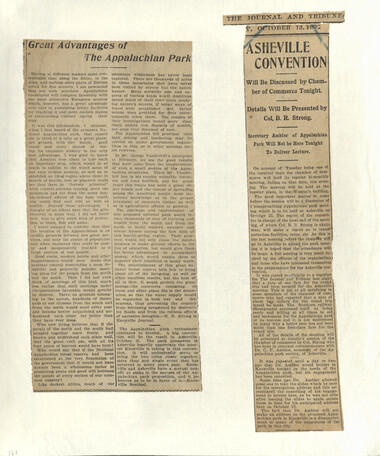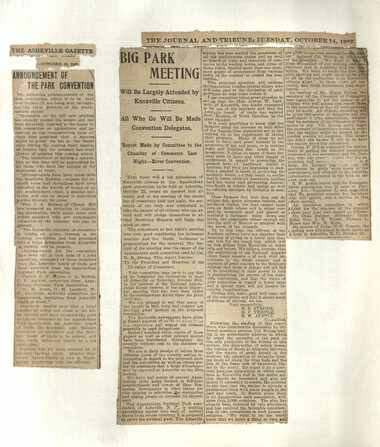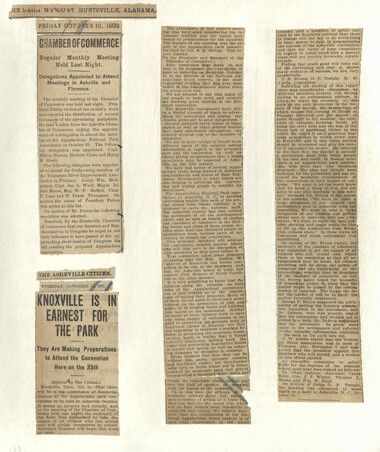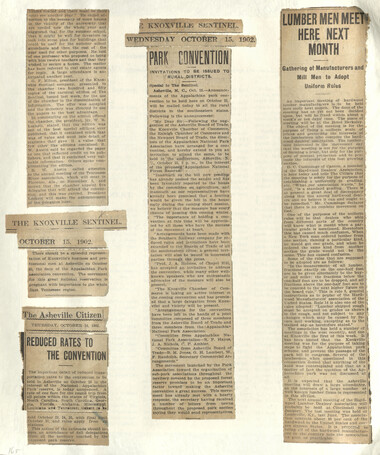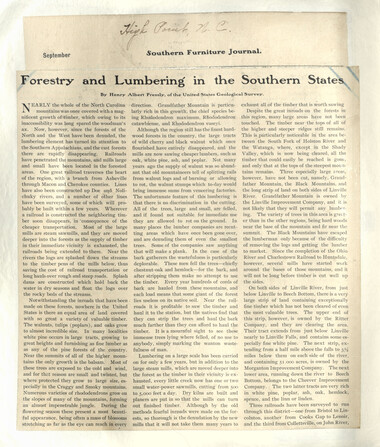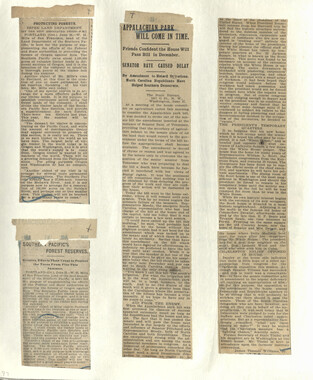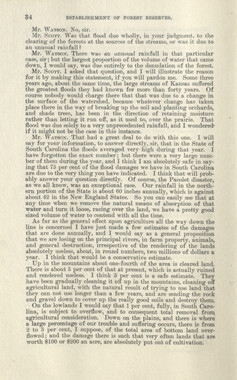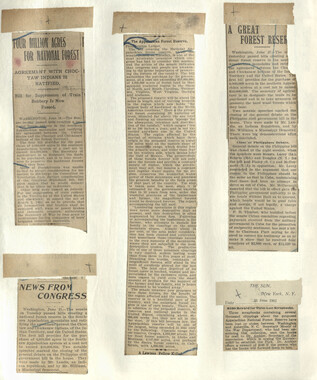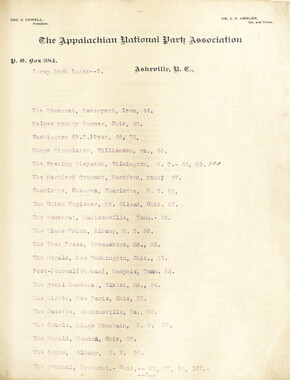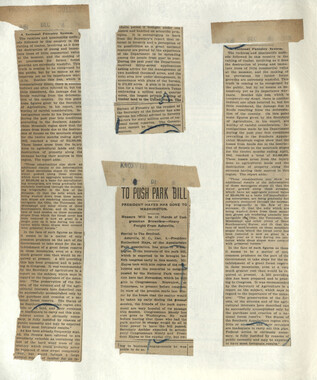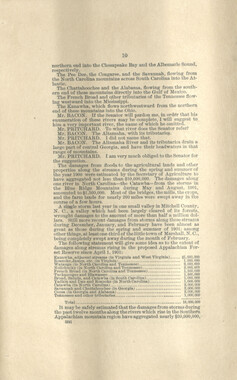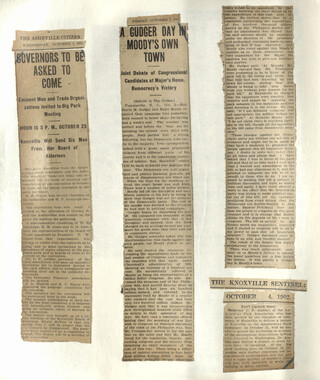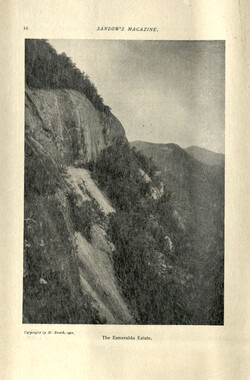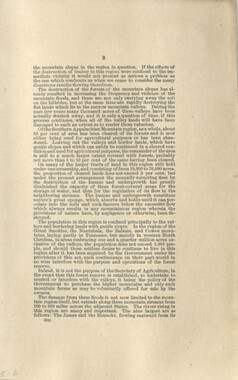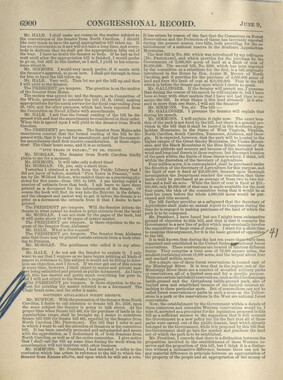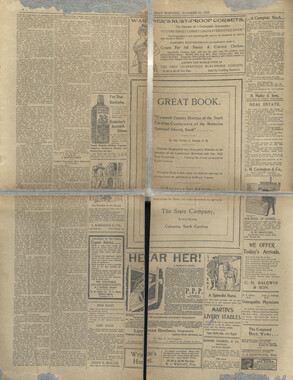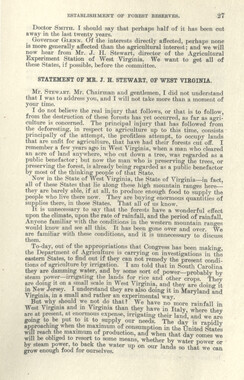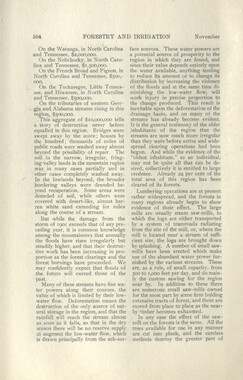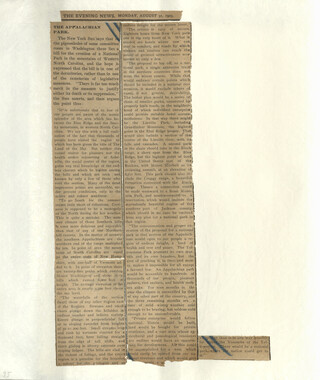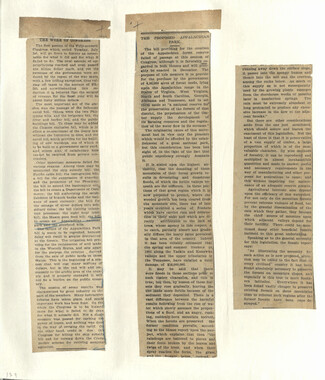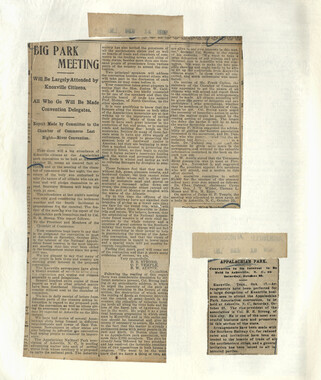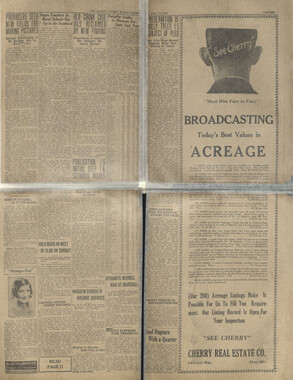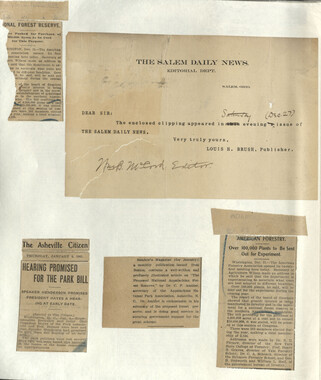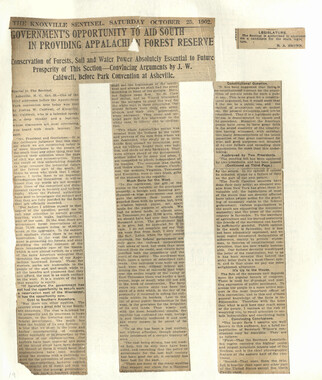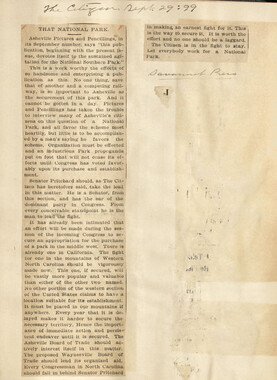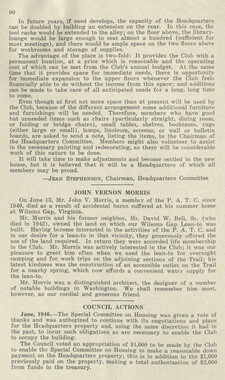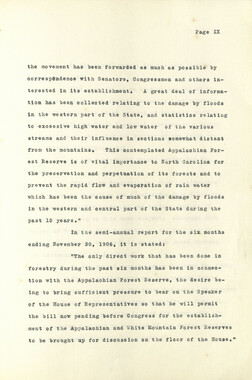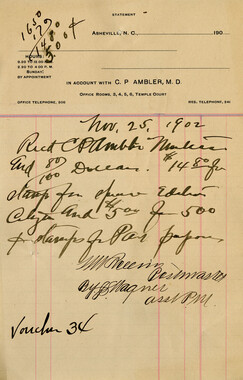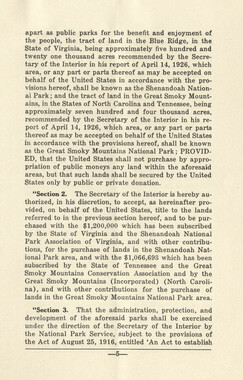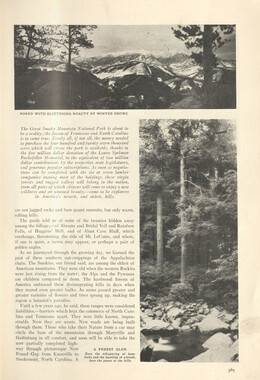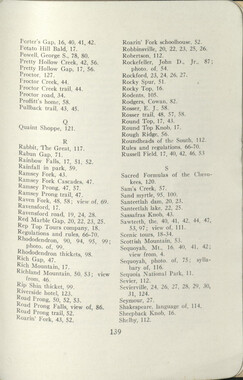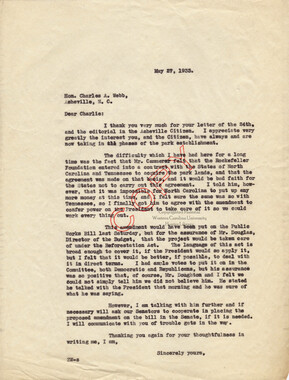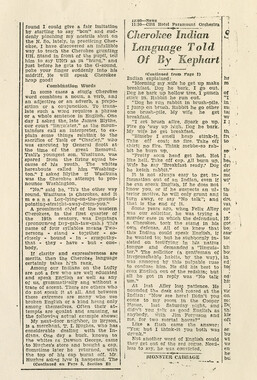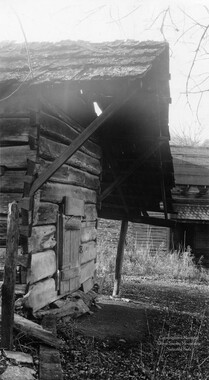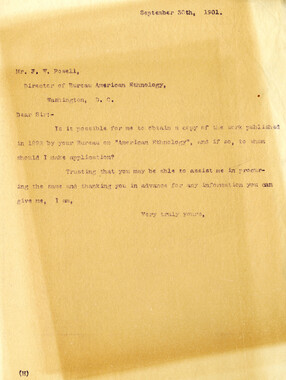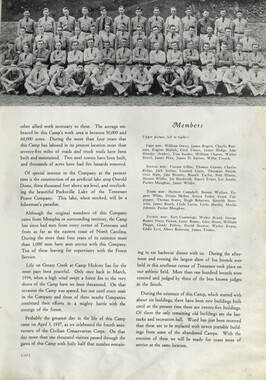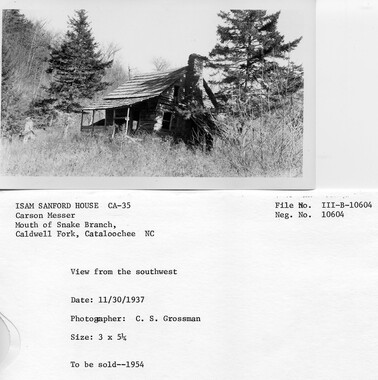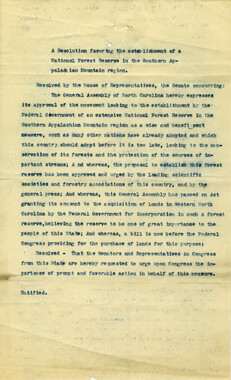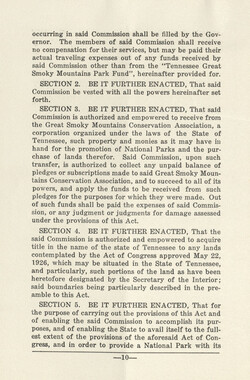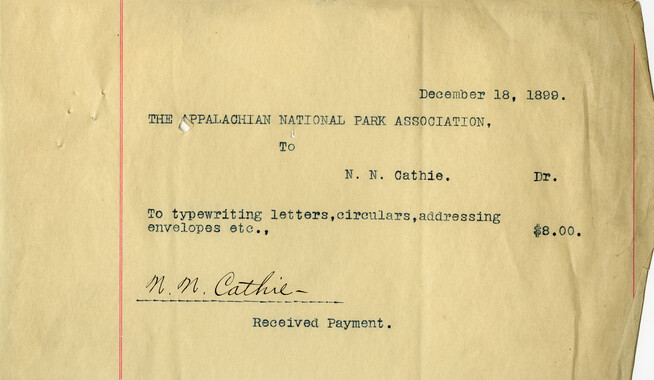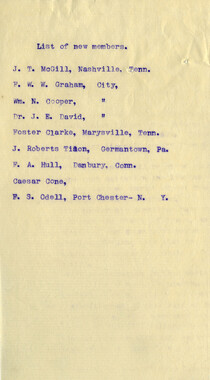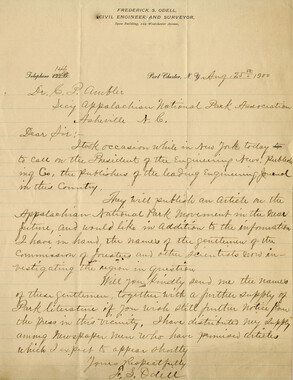Western Carolina University (20)
View all
- Canton Champion Fibre Company (2308)
- Cherokee Traditions (292)
- Civil War in Southern Appalachia (165)
- Craft Revival (1942)
- Great Smoky Mountains - A Park for America (2766)
- Highlights from Western Carolina University (430)
- Horace Kephart (941)
- Journeys Through Jackson (154)
- LGBTQIA+ Archive of Jackson County (85)
- Oral Histories of Western North Carolina (314)
- Picturing Appalachia (6772)
- Stories of Mountain Folk (413)
- Travel Western North Carolina (160)
- Western Carolina University Fine Art Museum Vitreograph Collection (129)
- Western Carolina University Herbarium (92)
- Western Carolina University: Making Memories (708)
- Western Carolina University Publications (2283)
- Western Carolina University Restricted Electronic Theses and Dissertations (146)
- Western North Carolina Regional Maps (71)
- World War II in Southern Appalachia (131)
University of North Carolina Asheville (6)
View all
- Allanstand Cottage Industries (62)
- Appalachian National Park Association (53)
- Bennett, Kelly, 1890-1974 (1388)
- Berry, Walter (76)
- Brasstown Carvers (40)
- Carver, George Washington, 1864?-1943 (26)
- Cathey, Joseph, 1803-1874 (1)
- Champion Fibre Company (233)
- Champion Paper and Fibre Company (297)
- Cherokee Indian Fair Association (16)
- Cherokee Language Program (22)
- Crowe, Amanda (40)
- Edmonston, Thomas Benton, 1842-1907 (7)
- Ensley, A. L. (Abraham Lincoln), 1865-1948 (275)
- Fromer, Irving Rhodes, 1913-1994 (70)
- George Butz (BFS 1907) (46)
- Goodrich, Frances Louisa (120)
- Grant, George Alexander, 1891-1964 (96)
- Heard, Marian Gladys (60)
- Kephart, Calvin, 1883-1969 (15)
- Kephart, Horace, 1862-1931 (313)
- Kephart, Laura, 1862-1954 (39)
- Laney, Gideon Thomas, 1889-1976 (439)
- Masa, George, 1881-1933 (61)
- McElhinney, William Julian, 1896-1953 (44)
- Niggli, Josephina, 1910-1983 (10)
- North Carolina Park Commission (105)
- Osborne, Kezia Stradley (9)
- Owens, Samuel Robert, 1918-1995 (11)
- Penland Weavers and Potters (36)
- Roberts, Vivienne (15)
- Roth, Albert, 1890-1974 (142)
- Schenck, Carl Alwin, 1868-1955 (1)
- Sherrill's Photography Studio (2565)
- Southern Highland Handicraft Guild (127)
- Southern Highlanders, Inc. (71)
- Stalcup, Jesse Bryson (46)
- Stearns, I. K. (213)
- Thompson, James Edward, 1880-1976 (226)
- United States. Indian Arts and Crafts Board (130)
- USFS (683)
- Vance, Zebulon Baird, 1830-1894 (1)
- Weaver, Zebulon, 1872-1948 (58)
- Western Carolina College (230)
- Western Carolina Teachers College (282)
- Western Carolina University (1794)
- Western Carolina University. Mountain Heritage Center (18)
- Whitman, Walt, 1819-1892 (10)
- Wilburn, Hiram Coleman, 1880-1967 (73)
- Williams, Isadora (3)
- Cain, Doreyl Ammons (0)
- Crittenden, Lorraine (0)
- Rhodes, Judy (0)
- Smith, Edward Clark (0)
- Appalachian Region, Southern (2569)
- Asheville (N.C.) (1923)
- Avery County (N.C.) (26)
- Blount County (Tenn.) (161)
- Buncombe County (N.C.) (1672)
- Cherokee County (N.C.) (283)
- Clay County (N.C.) (555)
- Graham County (N.C.) (233)
- Great Smoky Mountains National Park (N.C. and Tenn.) (519)
- Haywood County (N.C.) (3524)
- Henderson County (N.C.) (70)
- Jackson County (N.C.) (4694)
- Knox County (Tenn.) (25)
- Knoxville (Tenn.) (12)
- Lake Santeetlah (N.C.) (10)
- Macon County (N.C.) (420)
- Madison County (N.C.) (212)
- McDowell County (N.C.) (39)
- Mitchell County (N.C.) (132)
- Polk County (N.C.) (35)
- Qualla Boundary (981)
- Rutherford County (N.C.) (76)
- Swain County (N.C.) (2115)
- Transylvania County (N.C.) (270)
- Watauga County (N.C.) (12)
- Waynesville (N.C.) (84)
- Yancey County (N.C.) (72)
- Aerial Photographs (3)
- Aerial Views (60)
- Albums (books) (4)
- Articles (1)
- Artifacts (object Genre) (228)
- Bibliographies (1)
- Biography (general Genre) (2)
- Cards (information Artifacts) (38)
- Clippings (information Artifacts) (191)
- Crafts (art Genres) (622)
- Depictions (visual Works) (21)
- Design Drawings (1)
- Drawings (visual Works) (184)
- Envelopes (73)
- Facsimiles (reproductions) (1)
- Fiction (general Genre) (4)
- Financial Records (12)
- Fliers (printed Matter) (67)
- Glass Plate Negatives (381)
- Guidebooks (2)
- Internegatives (10)
- Interviews (815)
- Land Surveys (102)
- Letters (correspondence) (1013)
- Manuscripts (documents) (618)
- Maps (documents) (177)
- Memorandums (25)
- Minutes (administrative Records) (59)
- Negatives (photographs) (5835)
- Newsletters (1285)
- Newspapers (2)
- Occupation Currency (1)
- Paintings (visual Works) (1)
- Pen And Ink Drawings (1)
- Periodicals (193)
- Personal Narratives (10)
- Photographs (12976)
- Plans (maps) (1)
- Poetry (6)
- Portraits (4533)
- Postcards (329)
- Programs (documents) (151)
- Publications (documents) (2236)
- Questionnaires (65)
- Scrapbooks (282)
- Sheet Music (2)
- Slides (photographs) (402)
- Songs (musical Compositions) (2)
- Sound Recordings (796)
- Specimens (92)
- Speeches (documents) (15)
- Tintypes (photographs) (8)
- Transcripts (322)
- Video Recordings (physical Artifacts) (23)
- Vitreographs (129)
- Text Messages (0)
- A.L. Ensley Collection (275)
- Appalachian Industrial School Records (7)
- Appalachian National Park Association Records (336)
- Axley-Meroney Collection (2)
- Bayard Wootten Photograph Collection (20)
- Bethel Rural Community Organization Collection (7)
- Blumer Collection (5)
- C.W. Slagle Collection (20)
- Canton Area Historical Museum (2110)
- Carlos C. Campbell Collection (282)
- Cataloochee History Project (64)
- Cherokee Studies Collection (4)
- Daisy Dame Photograph Album (5)
- Daniel Boone VI Collection (1)
- Doris Ulmann Photograph Collection (112)
- Elizabeth H. Lasley Collection (1)
- Elizabeth Woolworth Szold Fleharty Collection (4)
- Frank Fry Collection (95)
- George Masa Collection (173)
- Gideon Laney Collection (452)
- Hazel Scarborough Collection (2)
- Hiram C. Wilburn Papers (28)
- Historic Photographs Collection (236)
- Horace Kephart Collection (861)
- Humbard Collection (33)
- Hunter and Weaver Families Collection (1)
- I. D. Blumenthal Collection (4)
- Isadora Williams Collection (4)
- Jesse Bryson Stalcup Collection (47)
- Jim Thompson Collection (224)
- John B. Battle Collection (7)
- John C. Campbell Folk School Records (80)
- John Parris Collection (6)
- Judaculla Rock project (2)
- Kelly Bennett Collection (1407)
- Love Family Papers (11)
- Major Wiley Parris Civil War Letters (3)
- Map Collection (12)
- McFee-Misemer Civil War Letters (34)
- Mountain Heritage Center Collection (4)
- Norburn - Robertson - Thomson Families Collection (44)
- Pauline Hood Collection (7)
- Pre-Guild Collection (2)
- Qualla Arts and Crafts Mutual Collection (12)
- R.A. Romanes Collection (681)
- Rosser H. Taylor Collection (1)
- Samuel Robert Owens Collection (94)
- Sara Madison Collection (144)
- Sherrill Studio Photo Collection (2558)
- Smoky Mountains Hiking Club Collection (616)
- Stories of Mountain Folk - Radio Programs (374)
- The Reporter, Western Carolina University (510)
- Venoy and Elizabeth Reed Collection (16)
- WCU Gender and Sexuality Oral History Project (32)
- WCU Mountain Heritage Center Oral Histories (25)
- WCU Oral History Collection - Mountain People, Mountain Lives (71)
- WCU Students Newspapers Collection (1744)
- Western North Carolina Tomorrow Black Oral History Project (69)
- William Williams Stringfield Collection (2)
- Zebulon Weaver Collection (109)
- African Americans (390)
- Appalachian Trail (35)
- Artisans (521)
- Cherokee art (84)
- Cherokee artists -- North Carolina (10)
- Cherokee language (21)
- Cherokee pottery (101)
- Cherokee women (208)
- Church buildings (170)
- Civilian Conservation Corps (U.S.) (110)
- College student newspapers and periodicals (1830)
- Dams (107)
- Dance (1023)
- Education (222)
- Floods (61)
- Folk music (1015)
- Forced removal, 1813-1903 (2)
- Forest conservation (220)
- Forests and forestry (1184)
- Gender nonconformity (4)
- Great Smoky Mountains National Park (N.C. and Tenn.) (181)
- Hunting (38)
- Landscape photography (25)
- Logging (118)
- Maps (83)
- Mines and mineral resources (8)
- North Carolina -- Maps (18)
- Paper industry (38)
- Postcards (255)
- Pottery (135)
- Railroad trains (71)
- Rural electrification -- North Carolina, Western (3)
- School integration -- Southern States (2)
- Segregation -- North Carolina, Western (5)
- Slavery (5)
- Sports (452)
- Storytelling (244)
- Waterfalls -- Great Smoky Mountains (N.C. and Tenn.) (66)
- Weaving -- Appalachian Region, Southern (280)
- Wood-carving -- Appalachian Region, Southern (328)
- World War, 1939-1945 (173)
Appalachian National Park Association Newspaper Clippings, 1899-1902
Item
Item’s are ‘child’ level descriptions to ‘parent’ objects, (e.g. one page of a whole book).
-
-
THE SOUTHERN MOUNTAINEERS. Attention is being called through the effort now well under way for the advancement of educational movements there, to the crude social conditions of the mountaineers in the Appalachian regions of the South. It is a little difficult to conceive of a large section in the eastern part of this country where common schools are barely in existence ; where they keep open in summer and are closed in winter; where they are so far apart that half the population is practically debarred and the sessions are so short that little learning is possible for the pupil and little professional equipment for the teacher ; and where they are indifferently regarded by the mass of the population. The current of progress iu its sweep seems to have left this residue of humanity untouched. Their isolation has immured them in the loneliness of ignorance. Americans for four or five generations, mauy of them are descendants of revolutionary soldiers. They should not be confounded, however, with the poor white, who, as has been well said, is actually degraded ; while the mountain man is a person not yet graded up. Probably few are better qualified by experience aud observation to testify regardiug these matters than is President Frost, of Berea College. The institution of which he is the head suffered with the loyal mountaineers during the war, and has their confidence. It is favorably located for drawing them to the edge of their mountain habitat, and bringing them into contact with young people from other sections. Moreover, Berea has succeeded in doing what probably few other southern colleges have successfully accomplished,— conferring its opportunities on black and white, boys and girls. More than two- sevenths of its students are colored, and since the first discussion of the subject when blacks were admitted, in I860, causing an oxodus of whites, most of whom afterwards returned, no question about the matter has ever been raised. Berea is training native teachers for the newly developing public schools. By its industrial department, with training in farming, forestry, shopwork, printing- office duties, domestic science and nursing, it teaches its students not only how to live, but also how to get a living. It is pleasant to note that the aim has been to give the essential rather than the accidental elements of civilization,—to make the people sharers of the best things, but to leave them unsophisticated. They are not to be taught to despise the log-cabin, but to develop it to better uses. There must be willing approval of educational means or factors which will not destroy simplicity of life but tend rather to its enrichment. If these people can retain their simple habits of life enlarged by knowledge and by the introduction of the sweet amenities of refining customs, safeguarding native strength of character, HOW THE PINE IS GOING FIGURES FROM AITKIN COUNTY District May Be Stripped In Four Years More—Wisconsin Valley loggers. Special to The Jounal. Aitkin, Minn., Dec. 9.- ■People in vari ous parts of Minnesota and elsewhere throughout the nortiwest, who think that Aitkin county is soil one vast pine forest, will be surprised t< learn that the limbe. cut during 1898 aggregated 47,650,000 feet, and that the anuunt standing to-day, closely estimated, is but 159,700,000 feet. These figures demonstrate that if the cut continues as big as last season for the next few years, Aitkin county will be devastated of pine in about four years, as the total can turdly exceed 200,000,000 feet, allowing tie margin of 40,000,000 from the few towns from which no figures were obtainable. The figi res were obtained from reliable cruisers vho know thoroughly the territory on Which they have reported, and it is believed the estimates are as near the truth as can be obtained except by an actual survey of the entire county. Large tracts in the county are now stripped of pine entirely, and It Is very easy to see that in the near future Aitkin county nust depend upon the development of its splendid agricultural and stock raising resources. The revenue from he logging business will ere long be ex- usted. an.' the farmer must then be the cer of wealth. 4* * STRUCTURAL STEEL * * TO SAVE THE FORESTS. + The New York World says stati show that the demand for structural steel is increasing faster than the manufacturers can increasi the output. This is In spite of the enormous advance made In the price of steel within the twelvemonth. The fact is a most hopeful one In many ways, wholly apart from its Industrial Significance. It means that we are building better than we ever did before—not only that we are using steel frames for our skyscrapers,, but that even In the construction of school houses and shops and dwellings we are using steel trusses where ten years ago we used wooden floor beams, and steel rafters Instead of wood. This creates a better security against Are. It means also, and not less importantly, the salvation of our forests. For not only Is wood now largely excluded from the structural parts of buildings, but even as trimming it is rapidly falling into disfavor. Window frames, window sashes and even doors and door casings of steel are now so perfectly made and so cheaply that they are rapidly replacing wood, as wire and tile has replaced lath, and marble and mosaics have taken their ancient place as flooring. With a little further development In this direction we shall be able to check the denudation of forests and protect pur rivers from flood on the one hand and drought on the other, and these are the noblest uses of forests. ng '!' ier A •ge lie ■al ly -h rs be-l A LOCAL VIEW OF THE PARK PROJECT The impression bus gone abroad that the people who live In the northern part of the state, in or around the region it is proposed to turn into a national park, arc unanimously opposed to the project. Such Is not the case; sentiment Is divided. Even from the practical dollars and cents standpoint the park has many champions in the northern part of the state. The following intelligent and reasonable statement by the Bemidjl Pioneer, right in the heart of the timber country, deals with one side of the economic question involved: -The whole scheme has excited a good deal of ridicule, unnecessary anger, and much uu- -ary opposition. It is somewhat difficult to understand just what the substantial objection is at Duluth, to the reservation of the l.eei-h and Wlnnibfgashish cessions as a inal park. Certainly, if the timber on those cessions should be put up at auction to day, ii would not fall into Duluth hands, nor be sawed at Duluth mills. If the agricultural lands were opened to' settlement, It would not add 2.000 settlers to the immediate Duluth constituency. The agricultural acreage is not within the three cessions to provide eighty h to that number of men. That Is, land that would be taken for homestead purposes. "Bat an intelligent system of forestry—the cutting of the old groves and the pn of the young timber, would permit the cutting Bl and sawing within Hie limits of the proposed Kt park of perhaps 100,000,000 feet or saw logs per year for fifteen years, thus hand supporting at least two fair-sized villages within the trade rsnga of Duluth. "Minneapolis and Wisconsin lumbermen are now slaughtering Hie pine of Beltrami and Hubbard counties at, the rate of 400,000,000 feet year, and driving the logs to Minneapolis, ' St. llilalrc and Orookston to be sawed The nay rolls are outside of the counties where the timber Is grown, and every pine three that will make a 2x4 Is cut aud si the mill. What particular permanent benefit does tin- i> .'inuiiity get from sort of a pre "Yet, that is th. Ihat would follow eral -ale of the pine on these ervationa. Nine . to log, aid go to Minneapolis, anil the Kosston line would have the lumlier camp trade and nothing The pioi r has constantly and eon- iv opposed this process. Anil if gov- ii supervision of Umber 1 tig on these sessions should Induce 'tain Shevlln to build a sawmill at lluss Lai, would be prouder of the day than the editor of this "The sawmll-1 must come to the root of the tree, for transportation facilities now amply warrant It The pay roll must stand with the tax roll, or the latter will swell Into undue proportions. The young tixn be left, where governed* el It, ami the old timber cut and sawed into hoards, ttion to this Is foolish, one-sided and. THE Burrow Si ENTHUI The N«l Muni ssary.' Waterl. crowd as; listened Burrows D. B. H marked campaign in whict most caj ing. Se the after the prom measure fulfilled. Oolone to a stll i with the I punctuat that it v ceed. I The pn almost e The hap' home In t of the cor law para The mice and the tied up mills, me the railr< j men out moving Commerc col ears Is everyv with rent missed 1, passed fr The farn live prlc* all this 1 Bryan an cess wou true; thi . n remedy s- la the let not voters In sions of agreed, c stored hf not the distract causes o standard LUMBER is no longer to be king in the Wisconsin Valley. The pine forests have practically disappeared, and in five years the big lumber industry will have come to an end. But the lumbermen, who own large tracts of land on which much spruce is growing, and who own such hydraulic works as have been built in the valley, propose to build up another industry, and to that end are already considering the matter of developing the water powers along the river, preliminary to building pulp and paper mills. Thus the work of evolution goes on. It may interest some of our Canadian friends to know that spruce still grows in this country, and that there is considerable of it along rivers that are capable of furnishing the power to operate pulp and paper mills.
Object
Object’s are ‘parent’ level descriptions to ‘children’ items, (e.g. a book with pages).
-
This is one of two notebooks assembled by the Appalachian National Park Association that includes documents and news clipping about the organization. The Appalachian National Park Association was formed in 1899 for the purpose of promoting the idea of a national park in the eastern U.S. Although housed in Asheville, North Carolina, the organization was a multi-state effort, attracting representatives from seven southern states. One of the highlights of the group’s activities was a convention held in 1902 to which 1,500 people attended. The association lobbied Congress for the creation of a park, but with limited success. The association disbanded in 1905.
-
